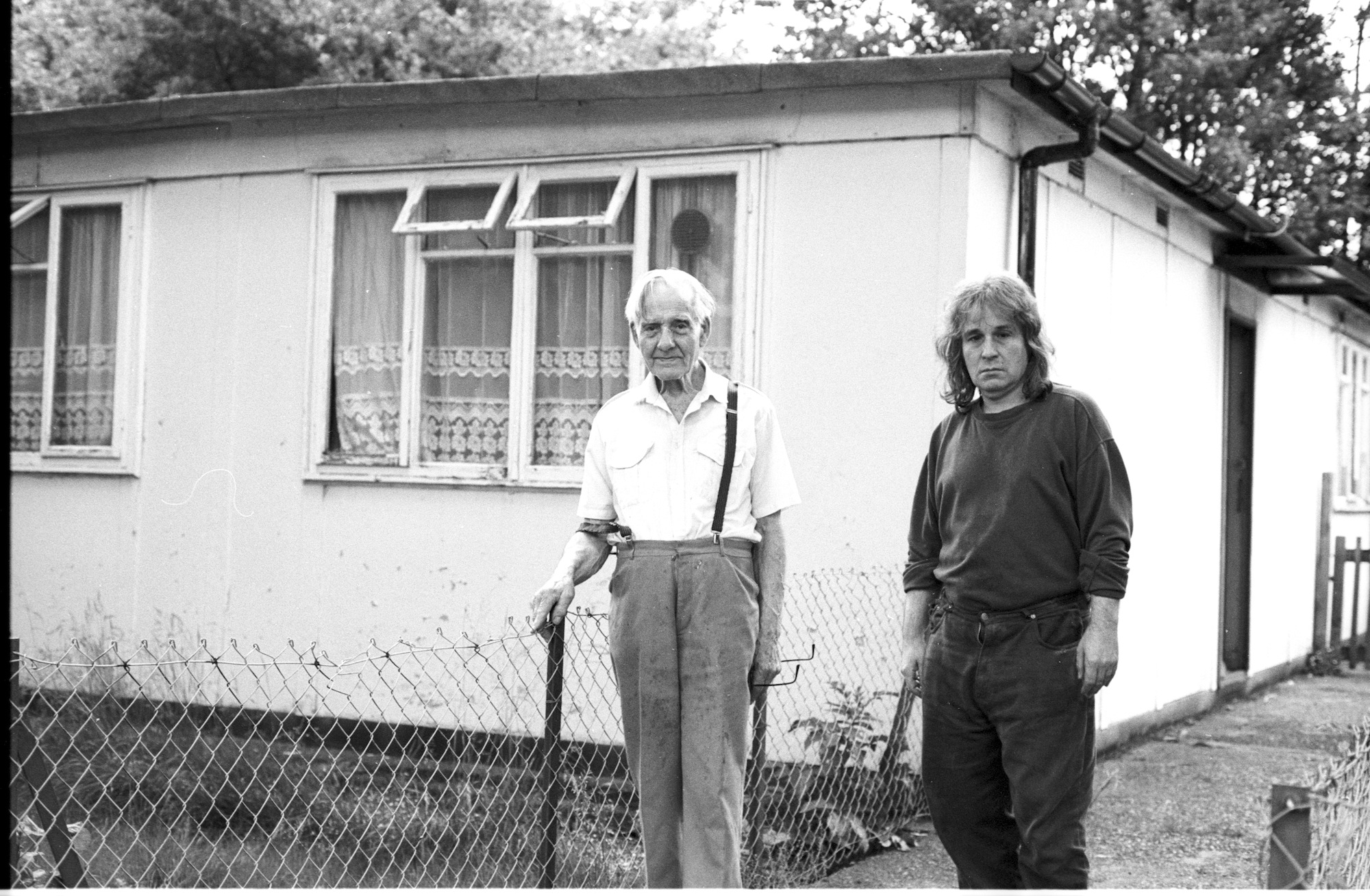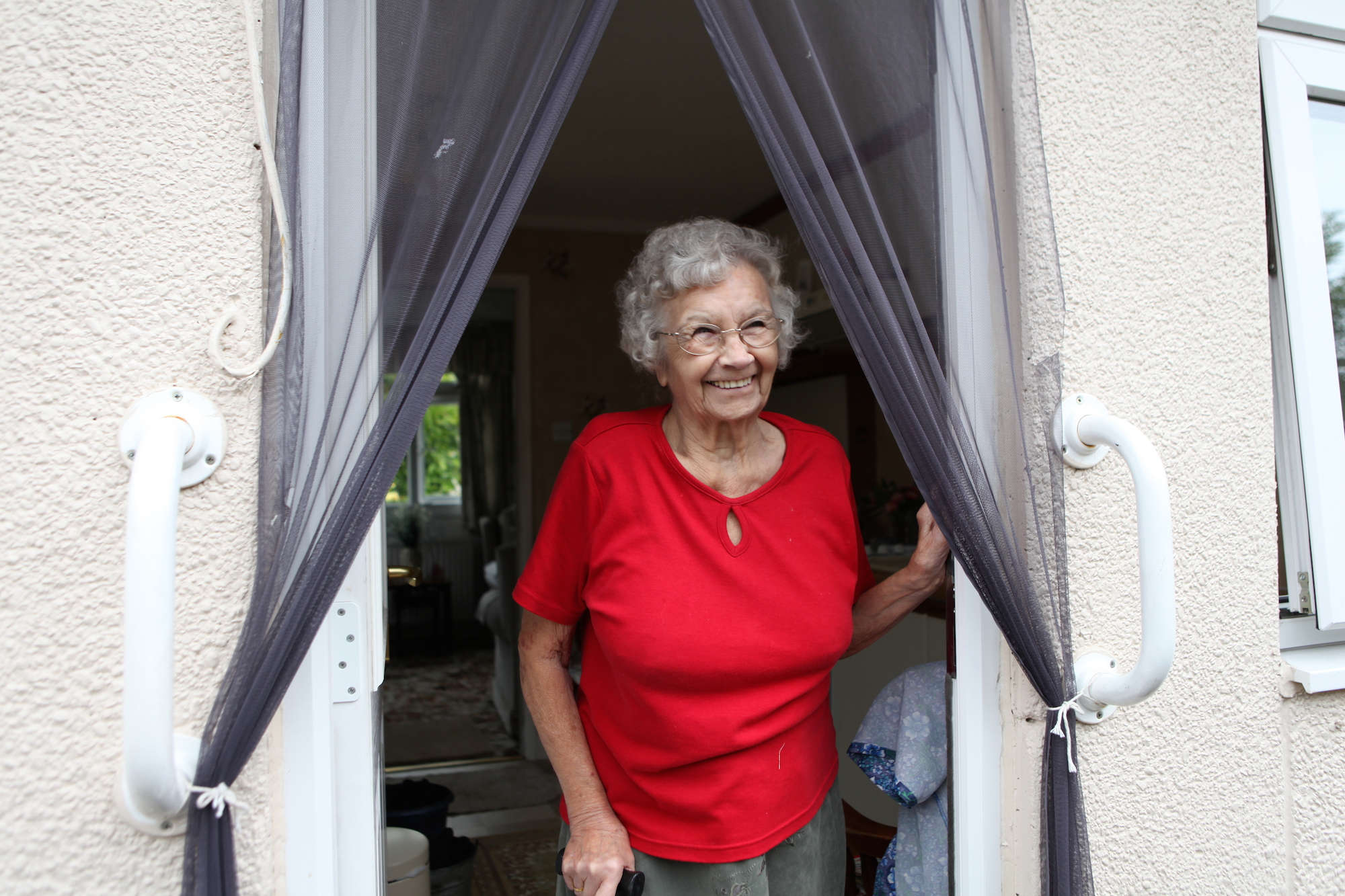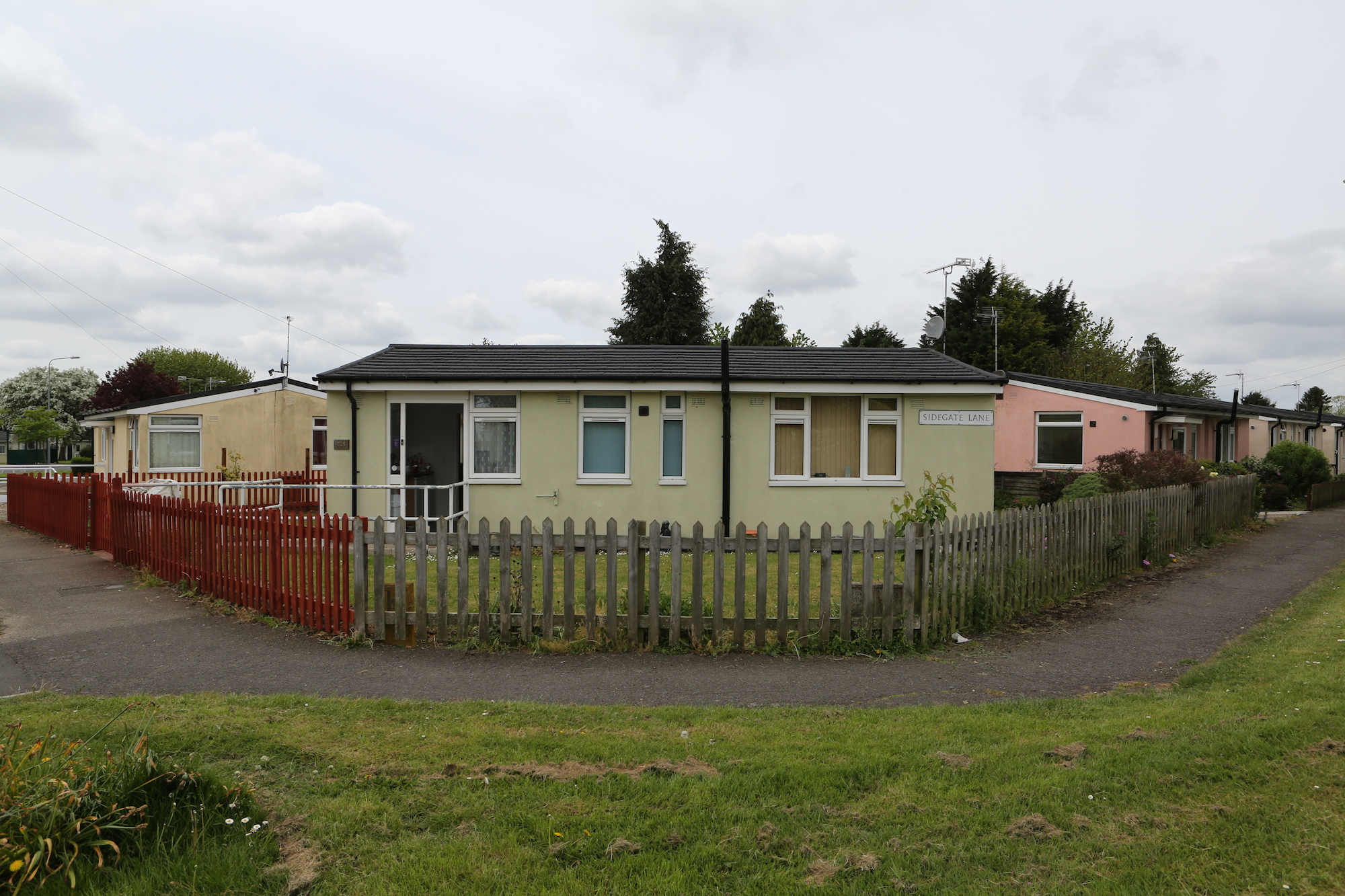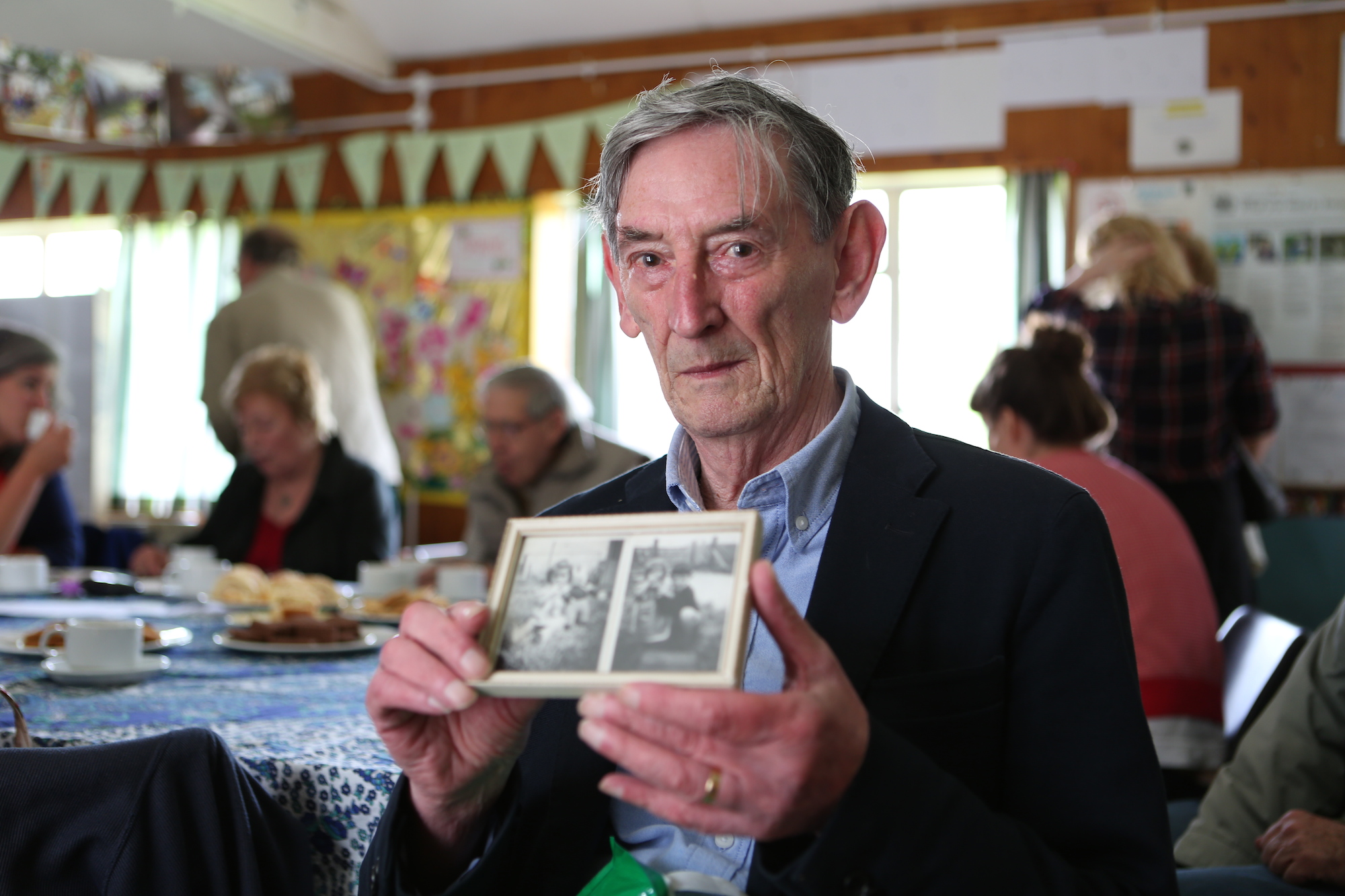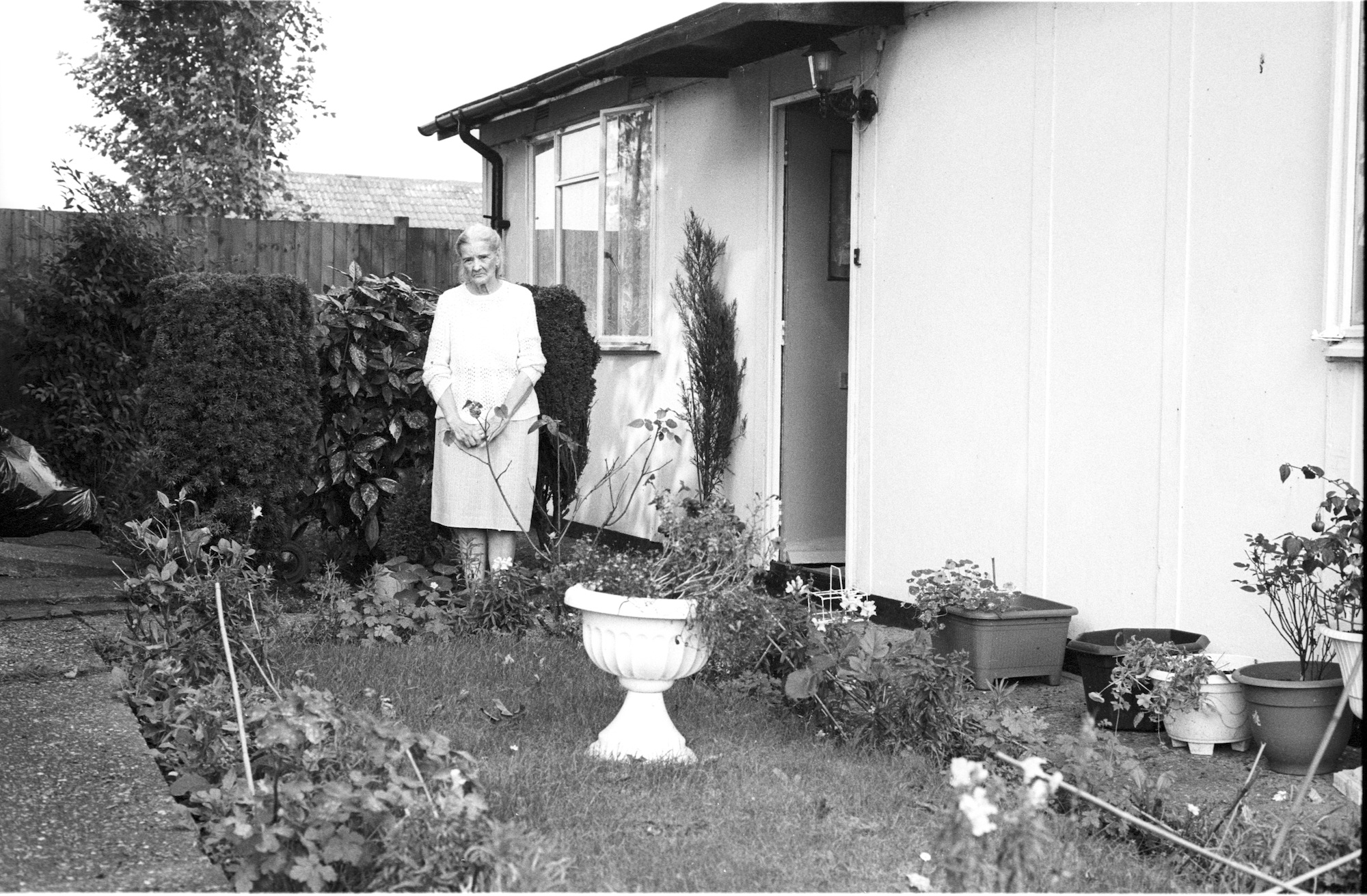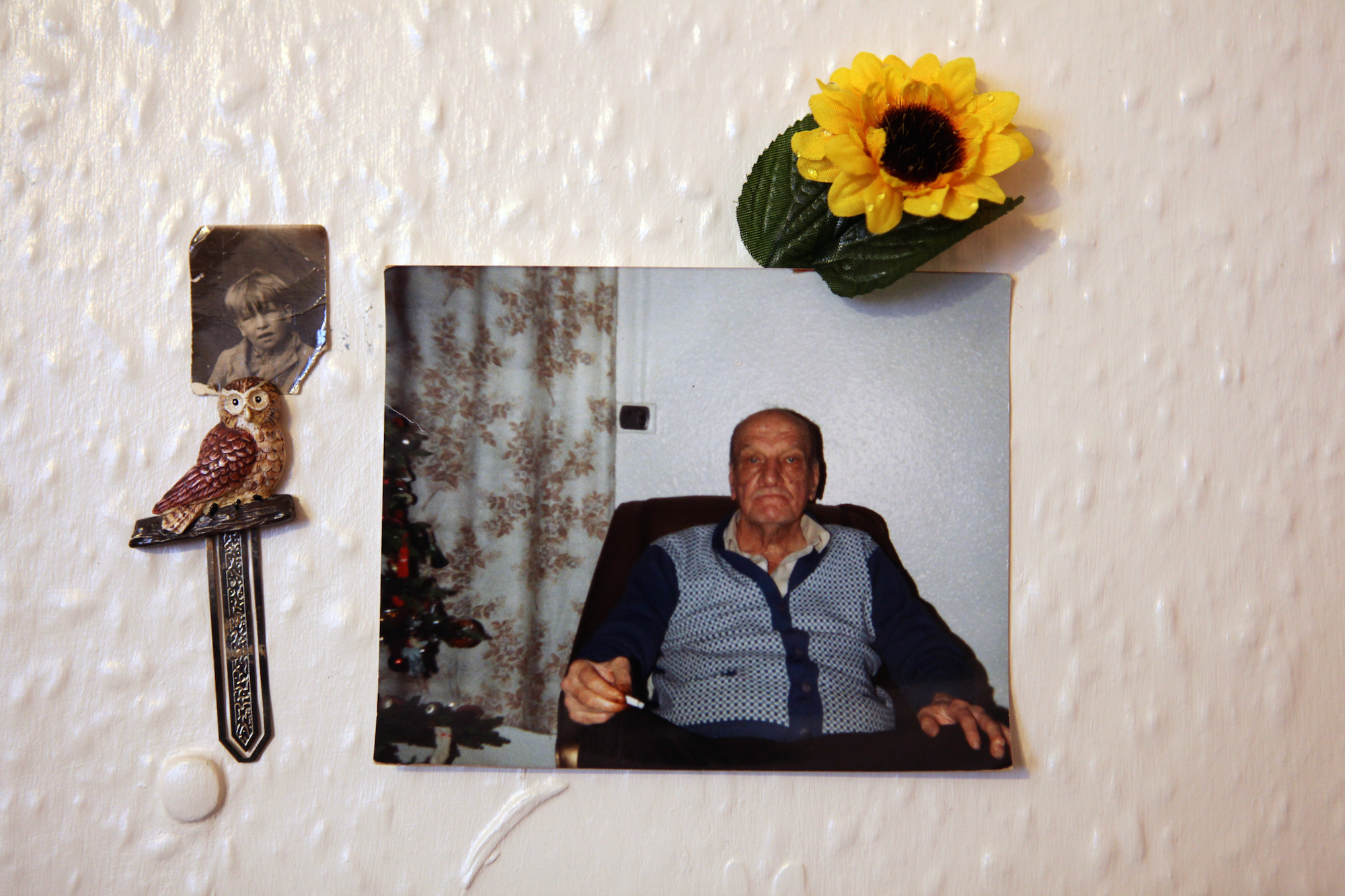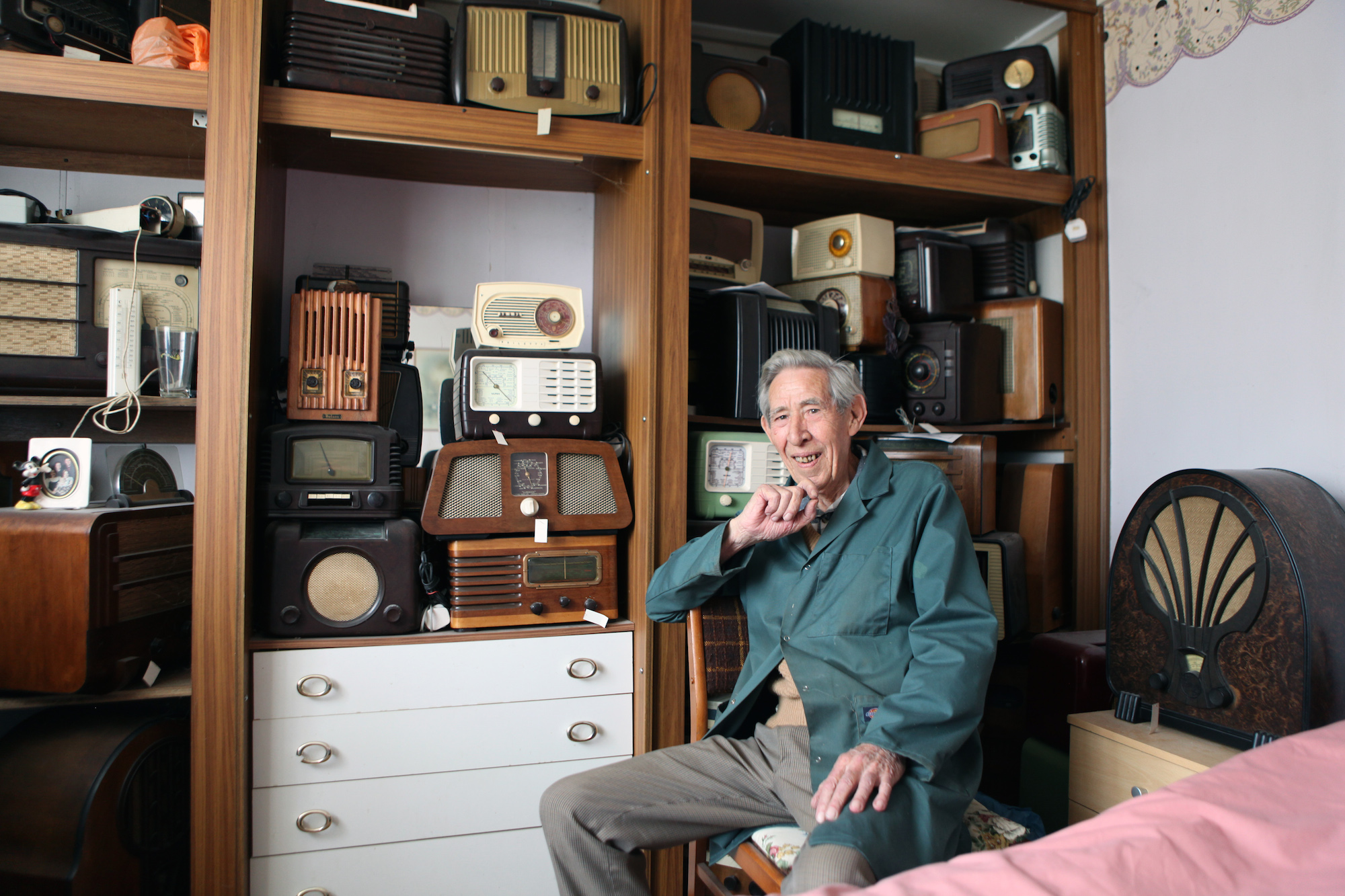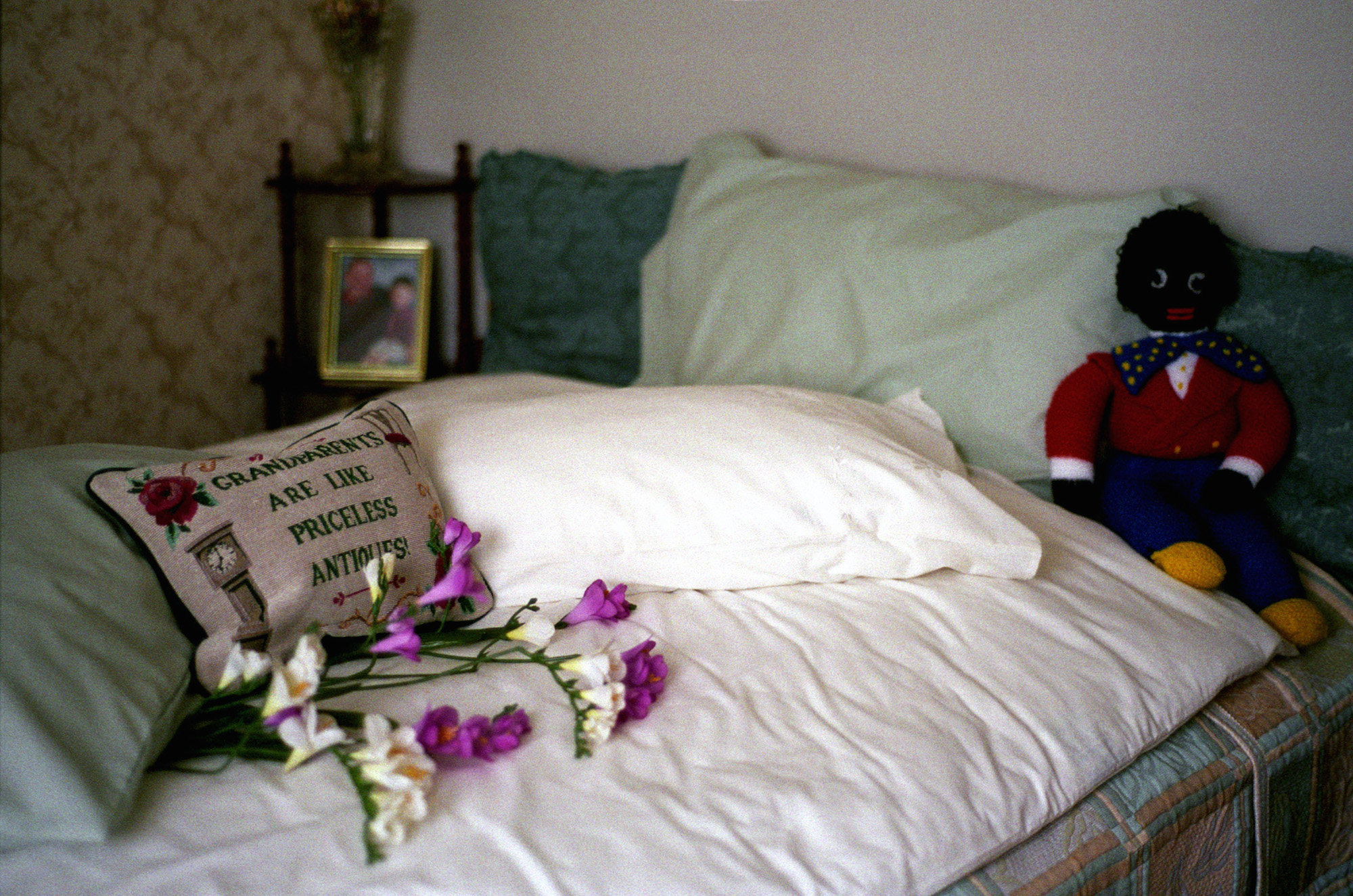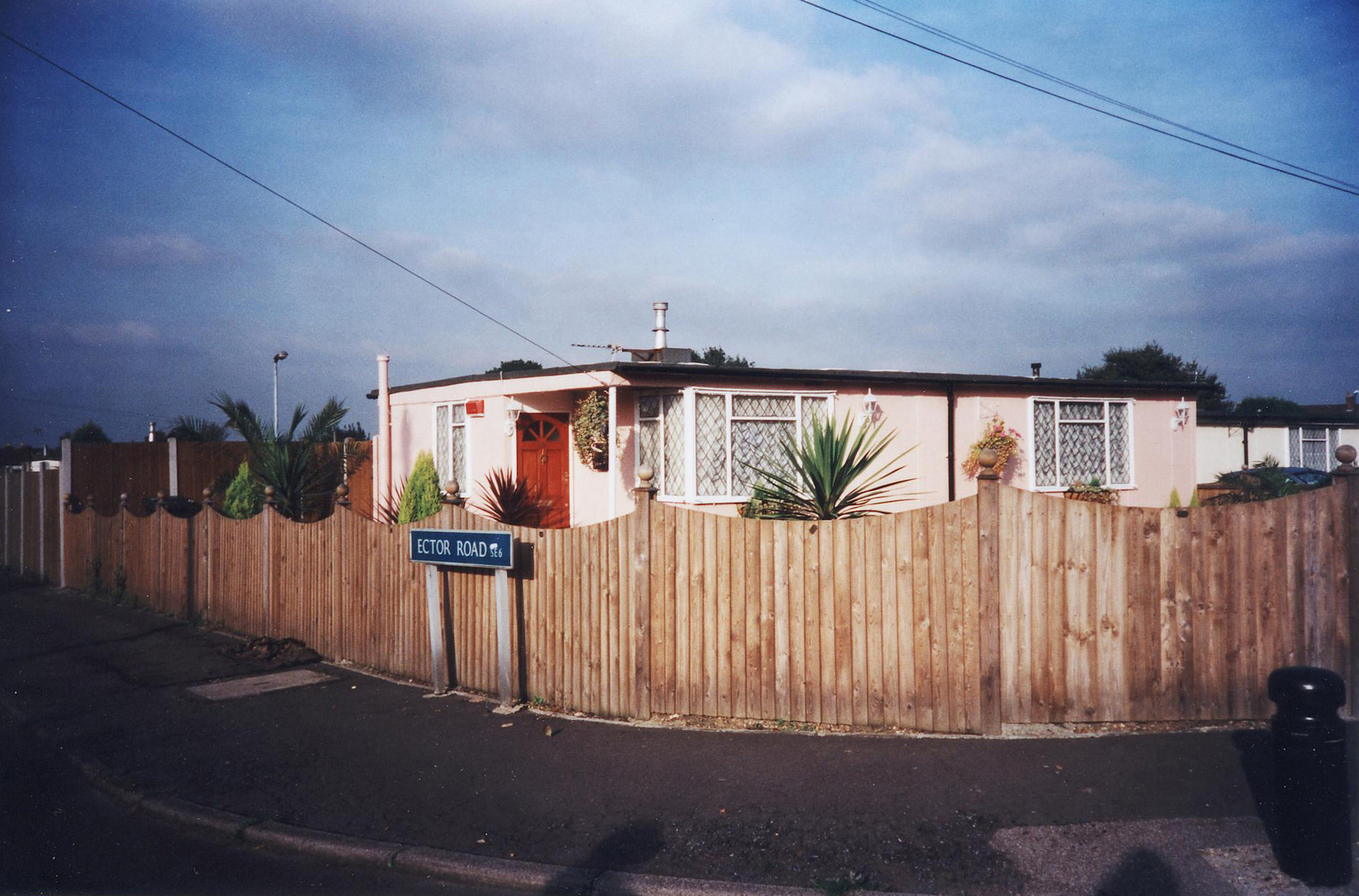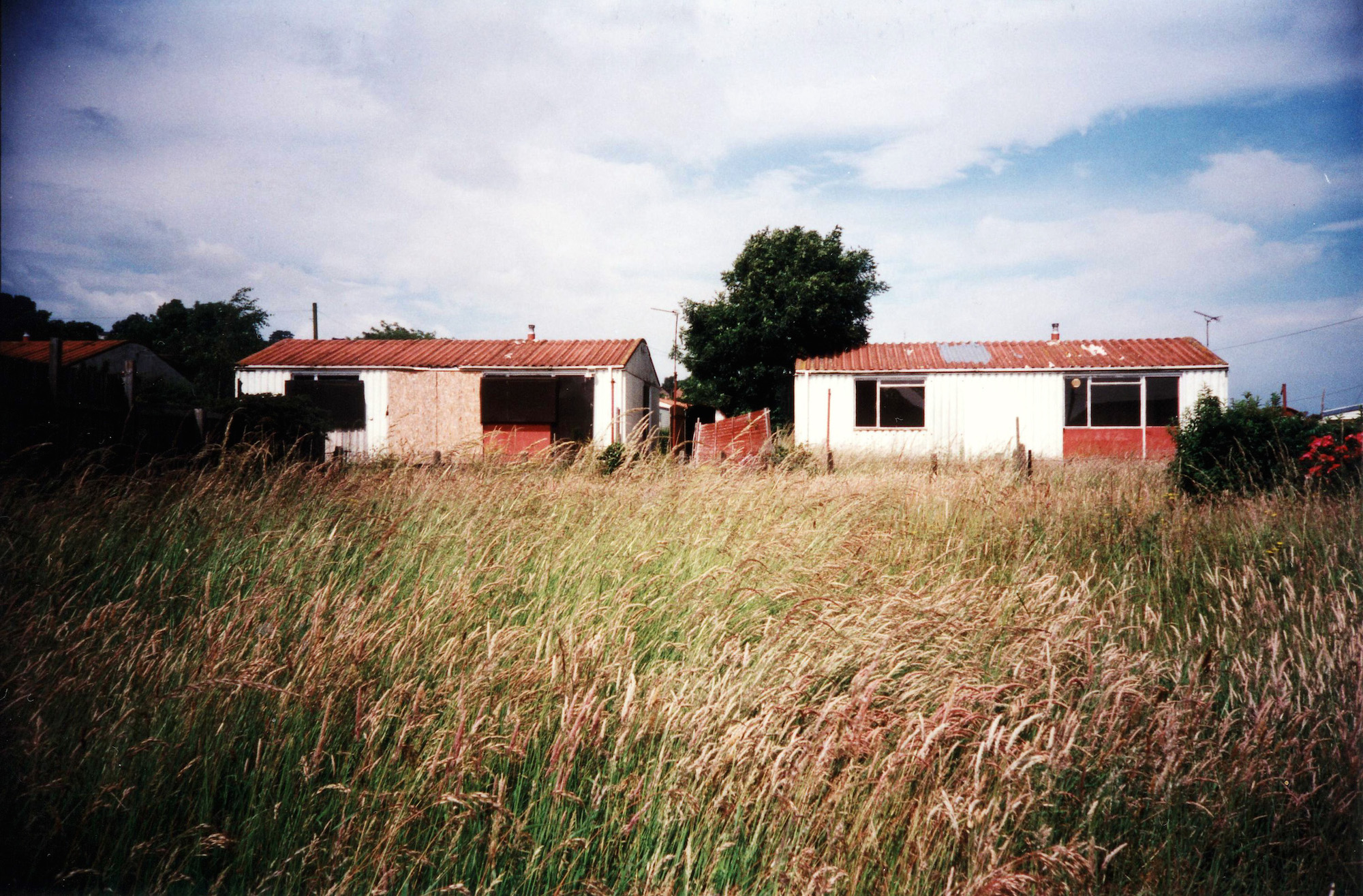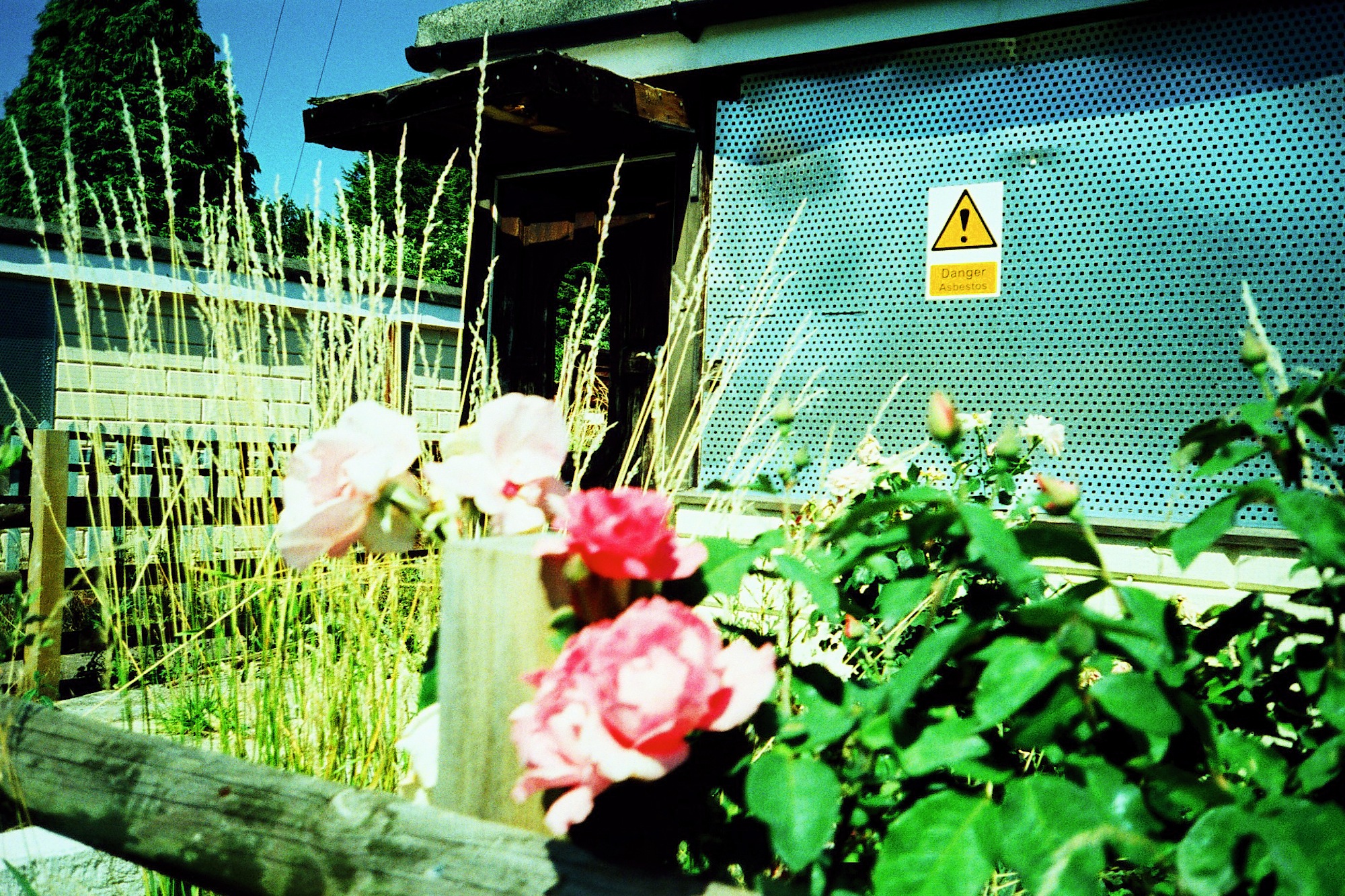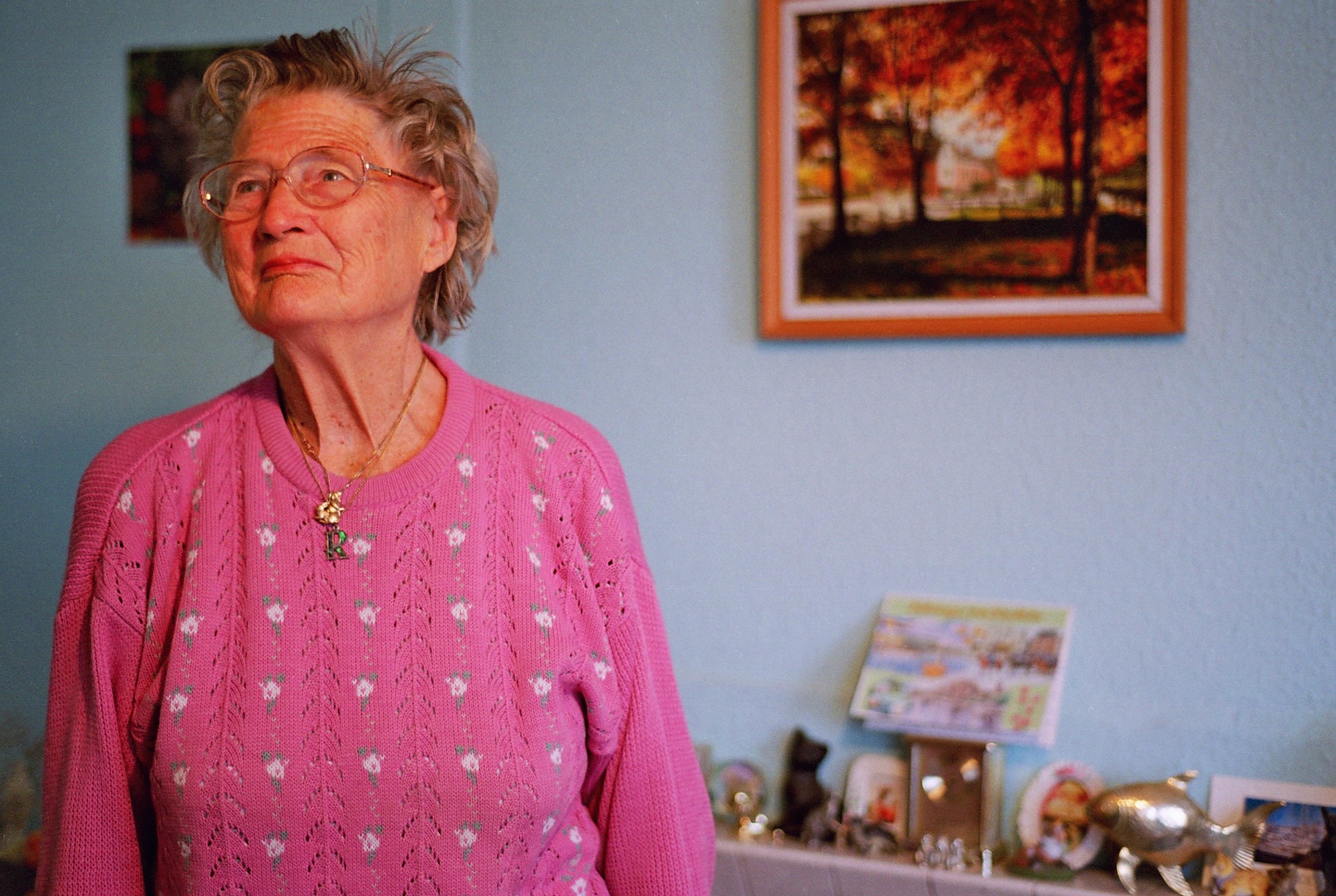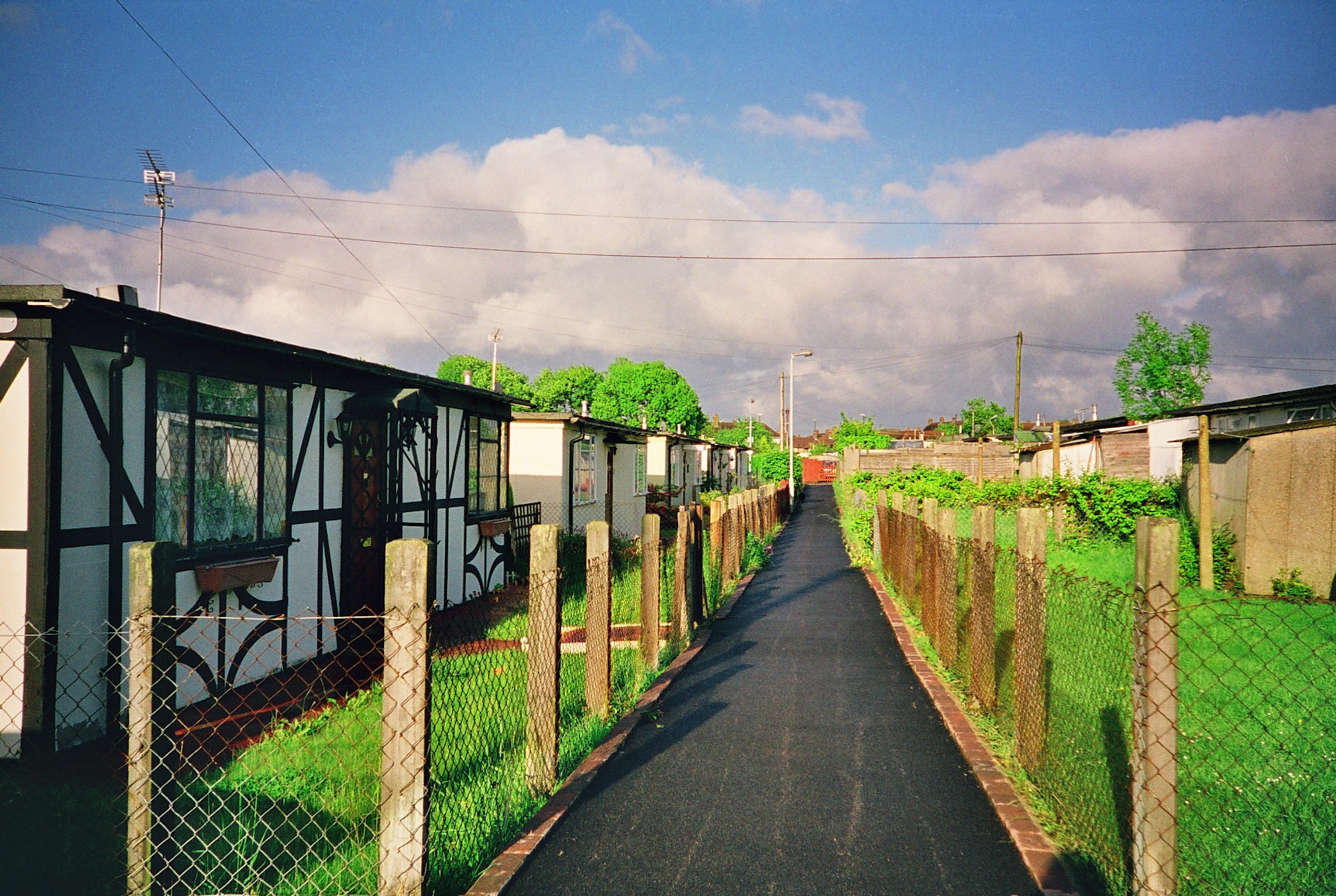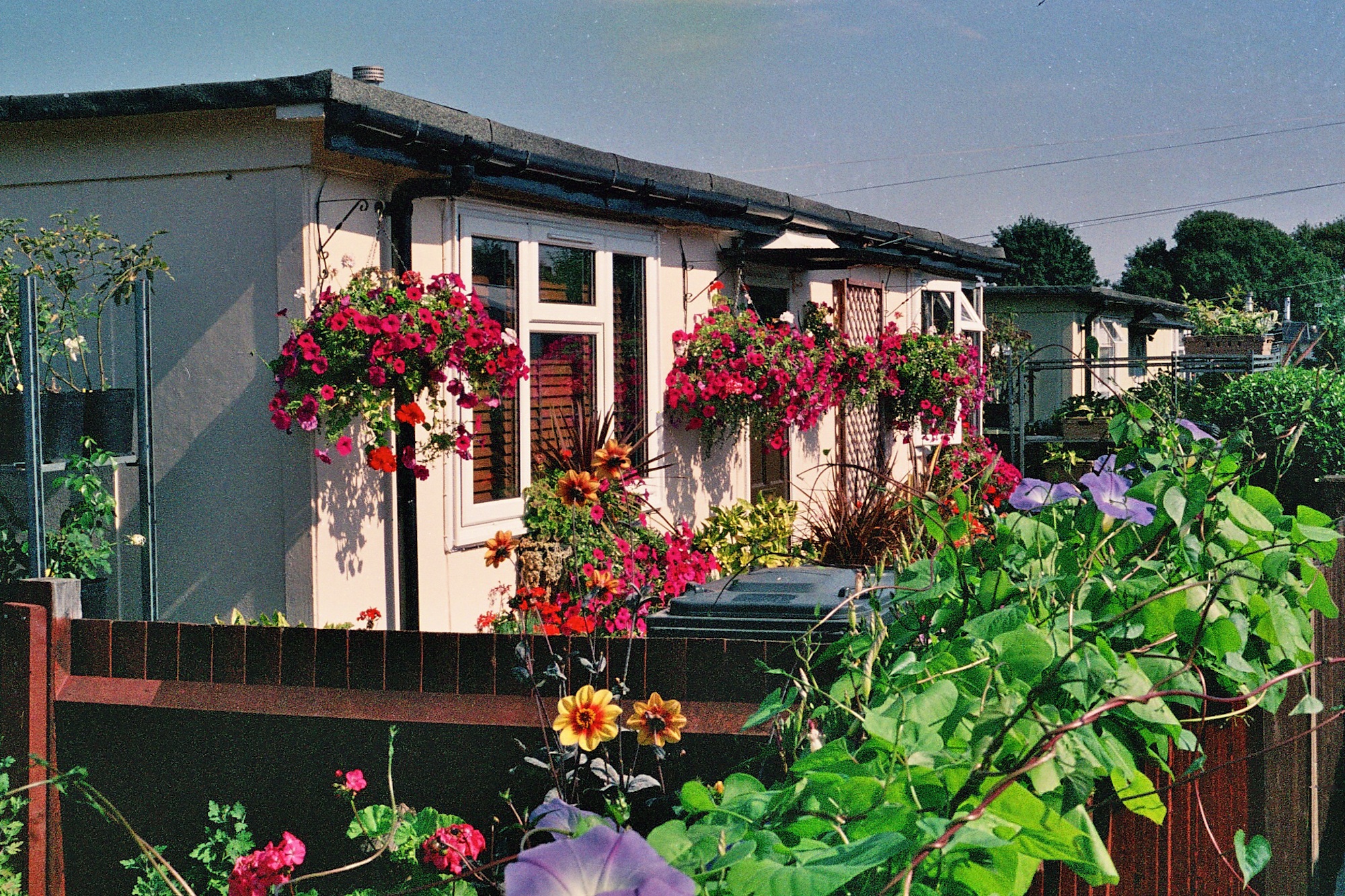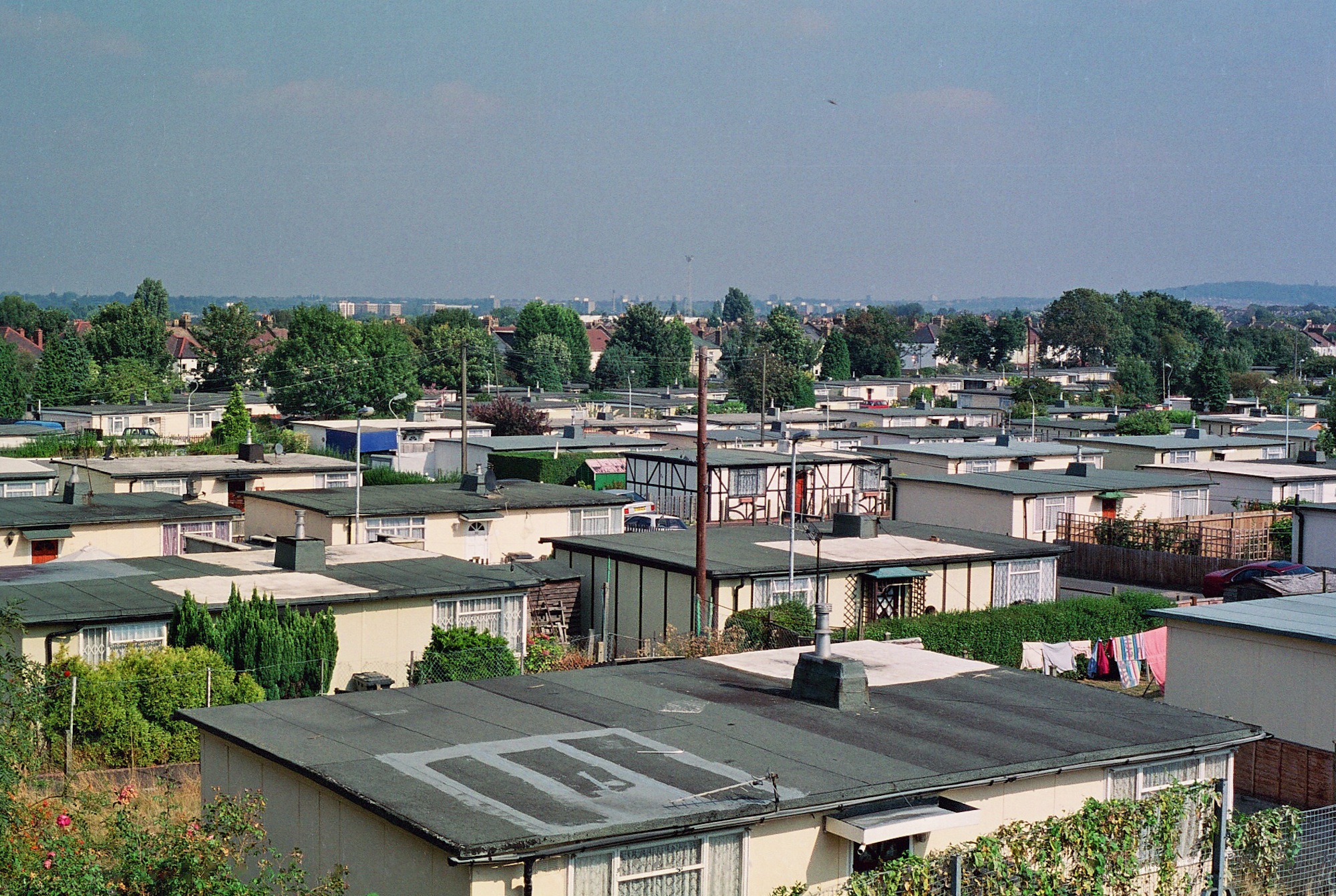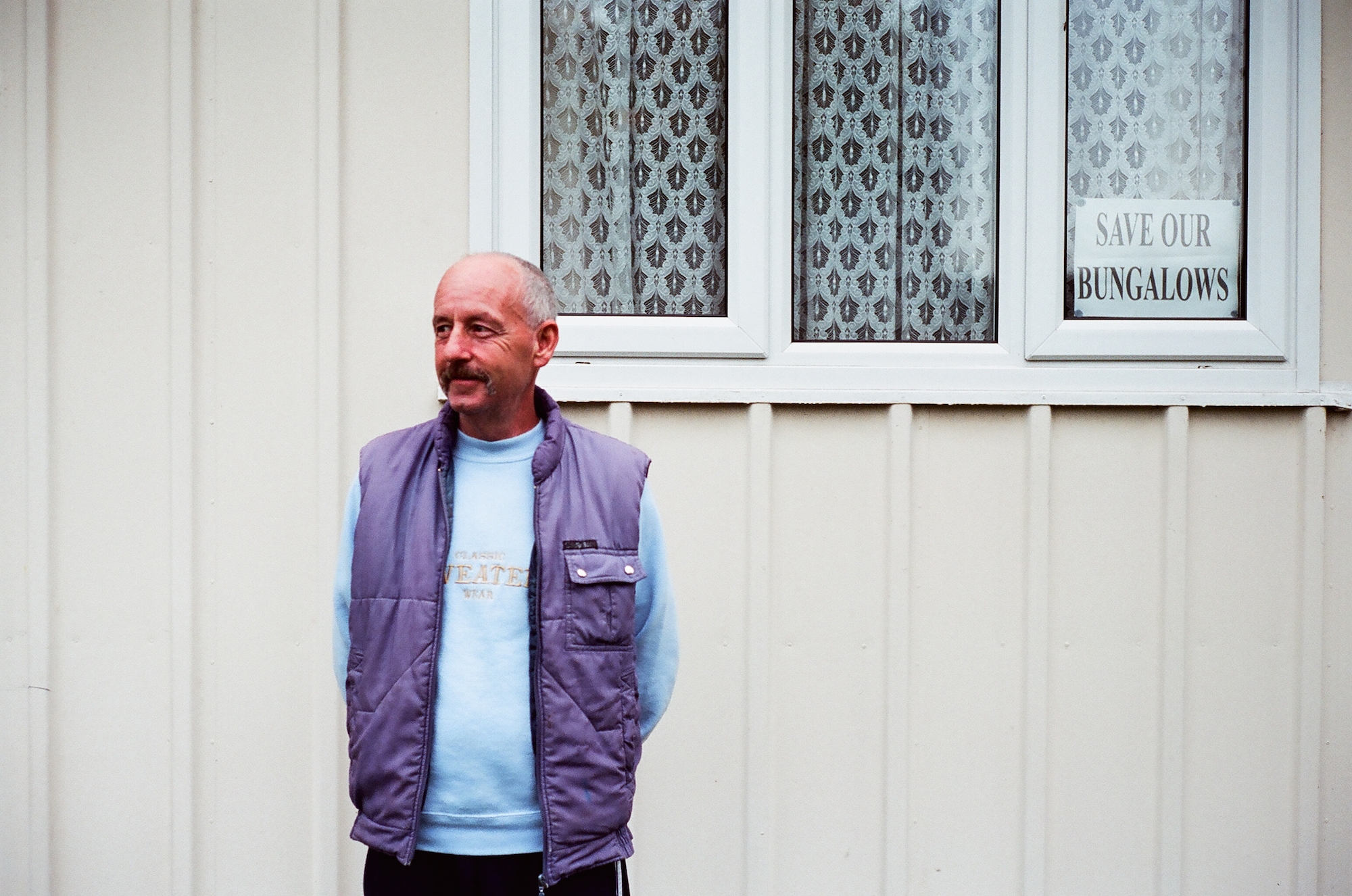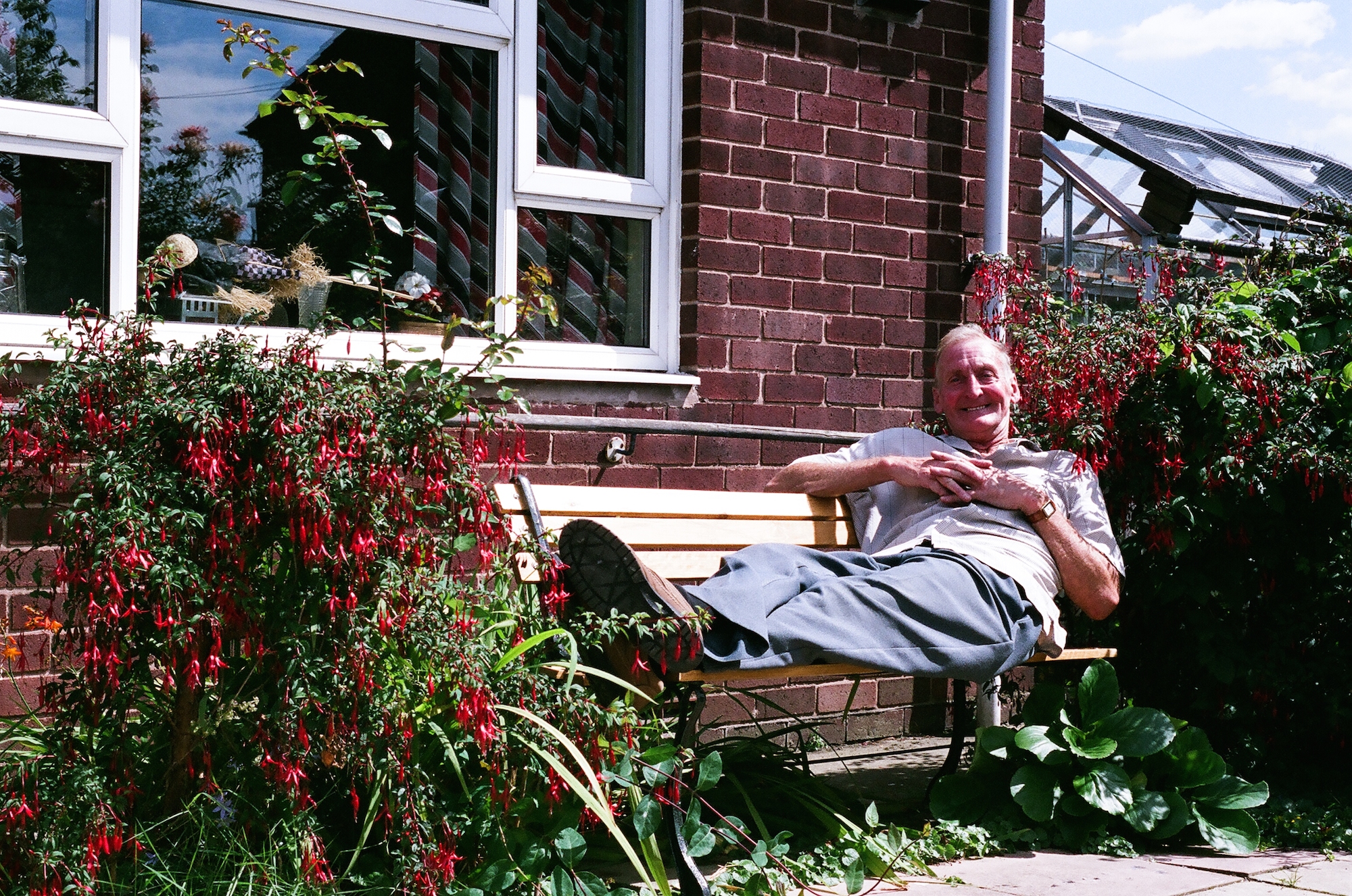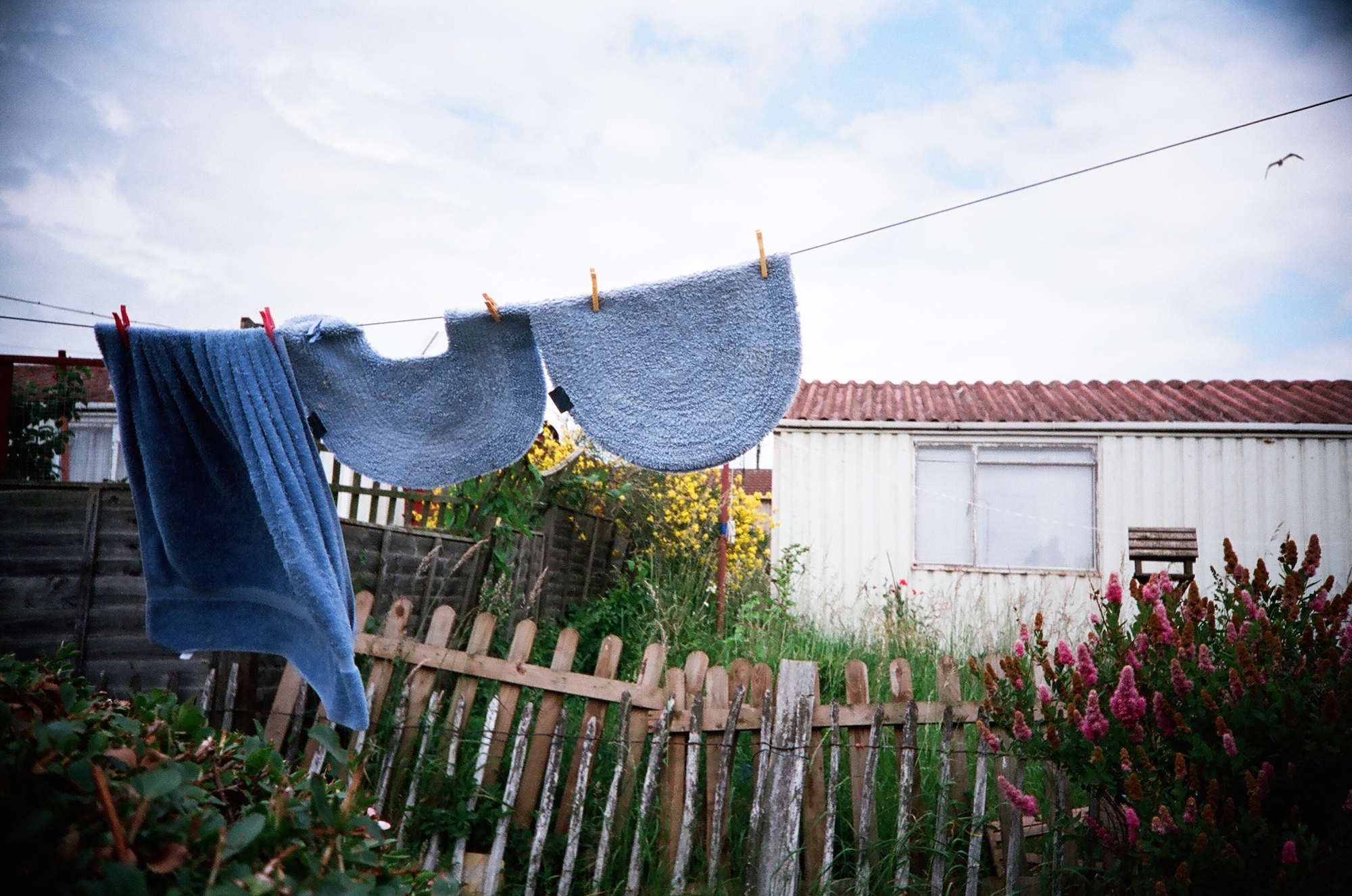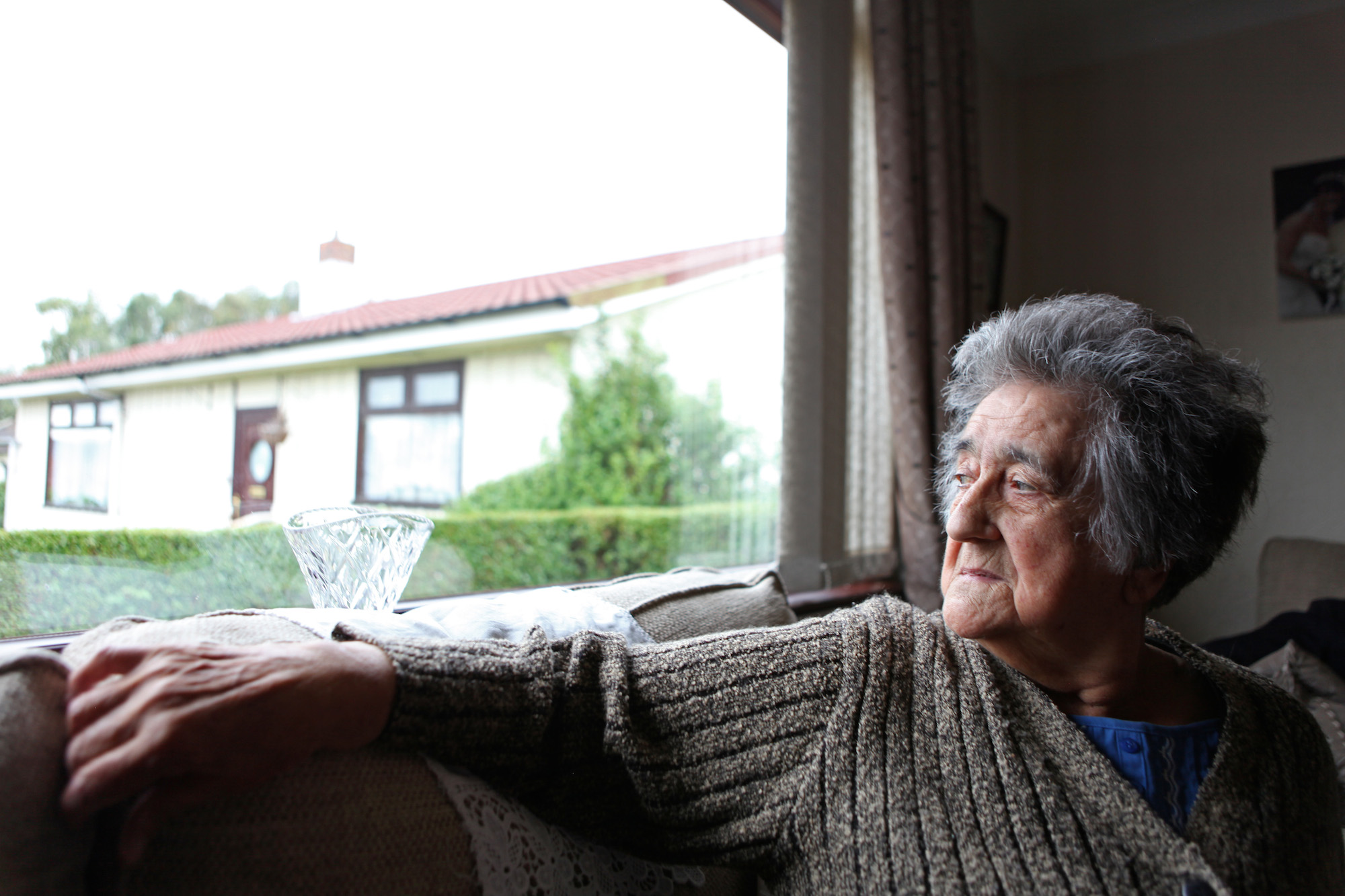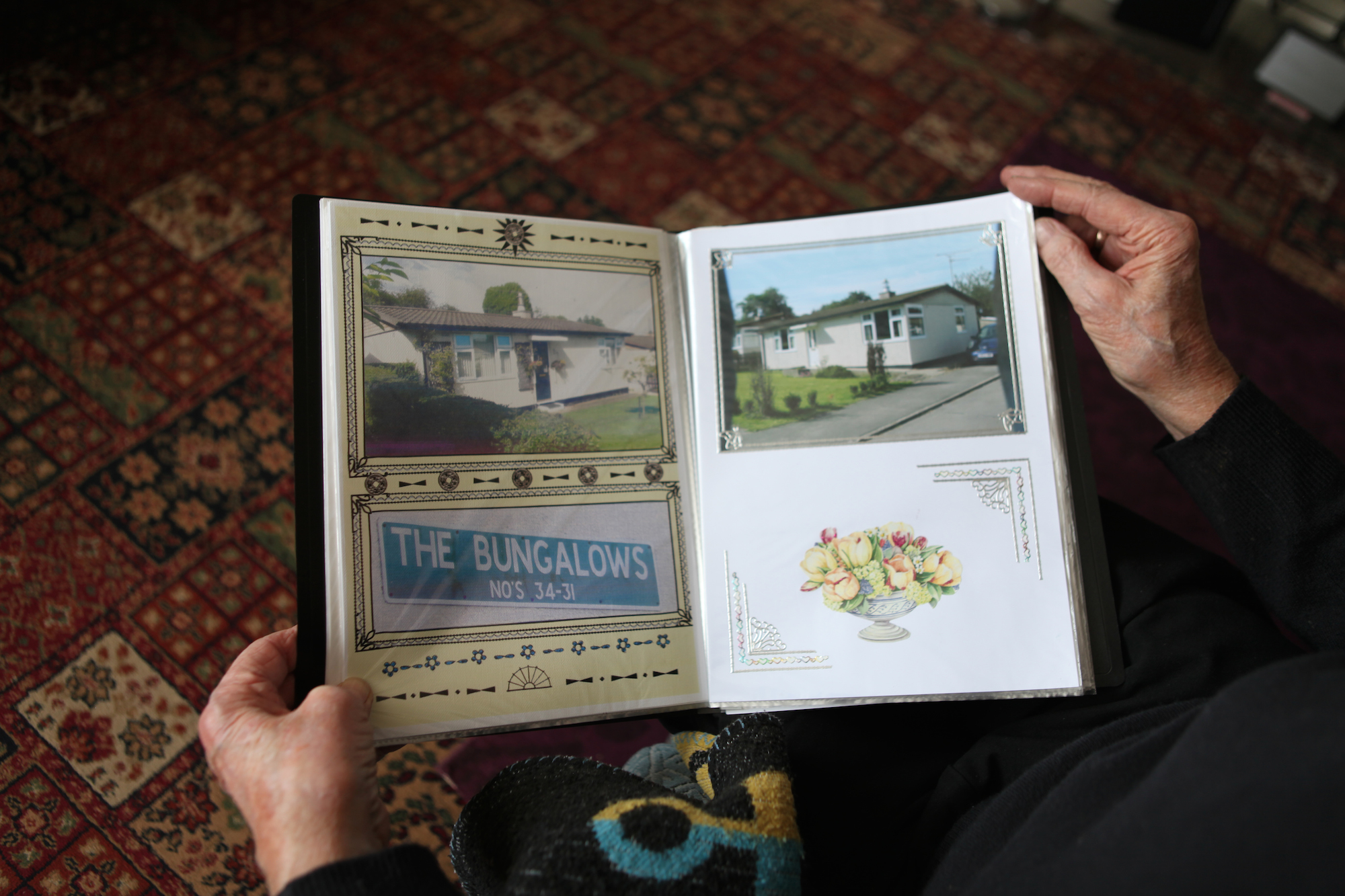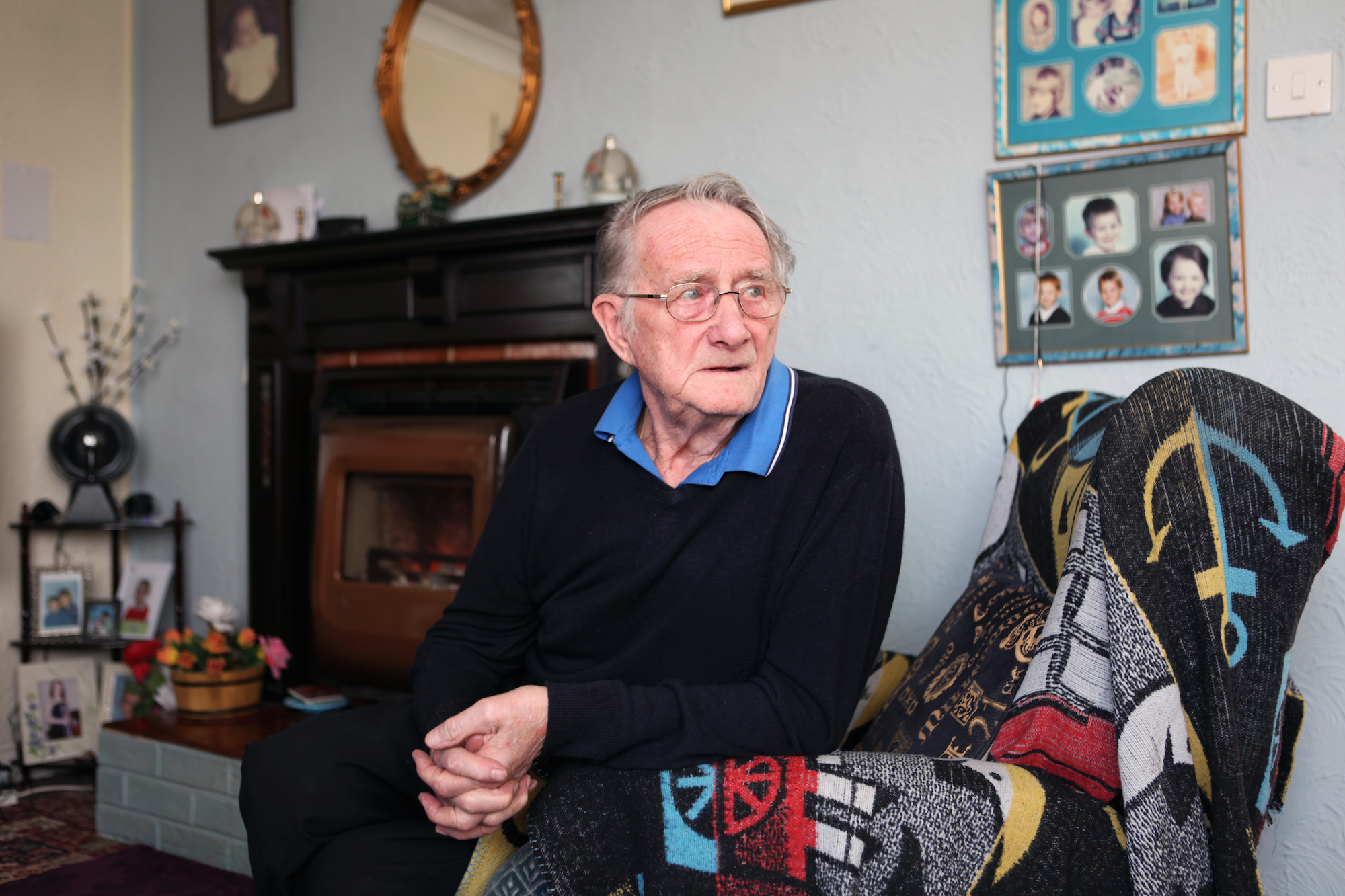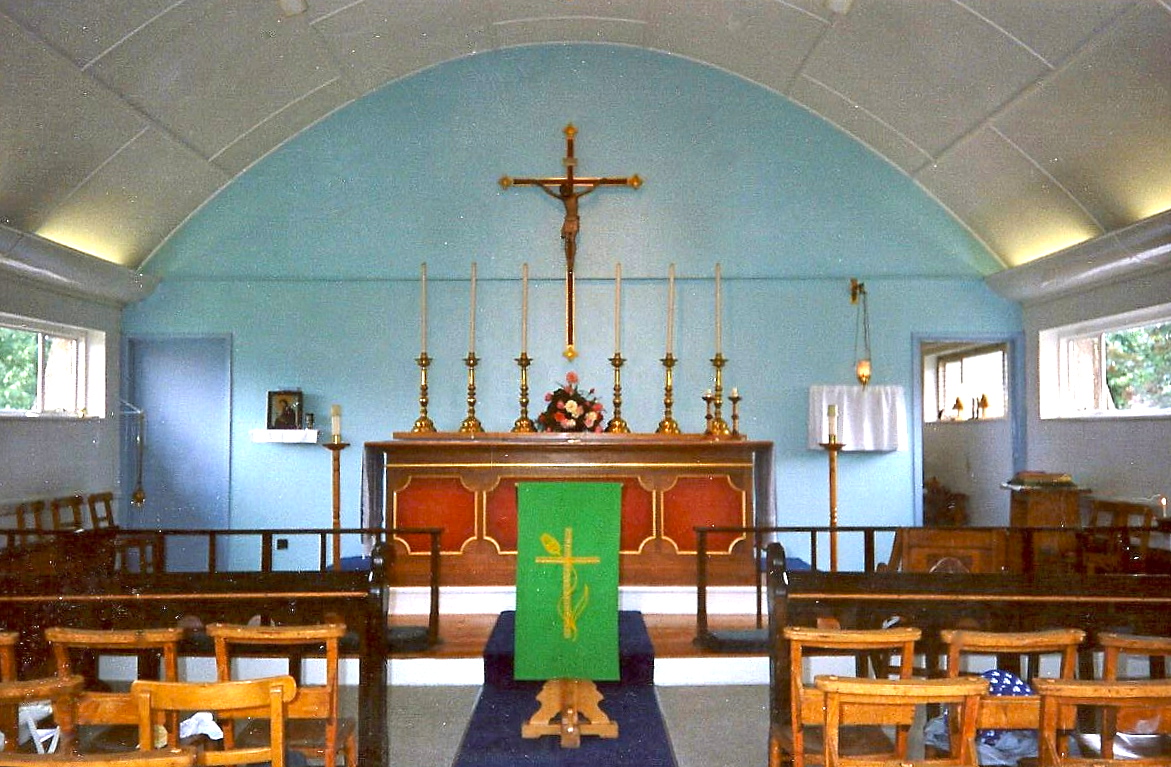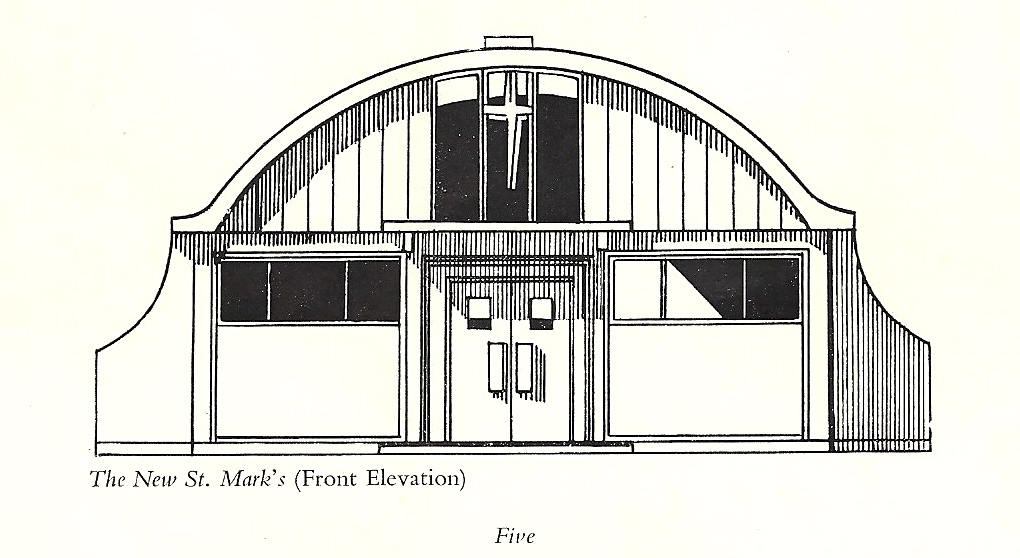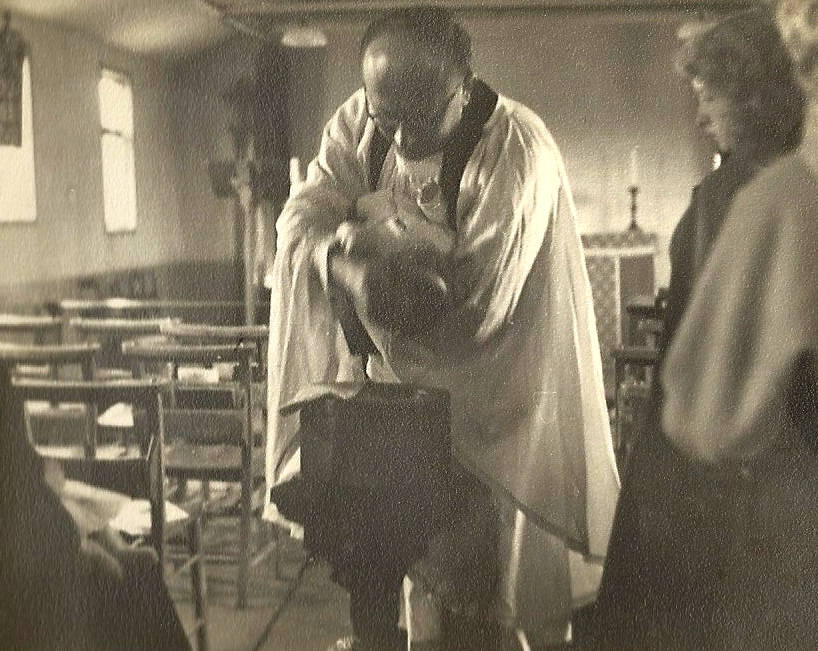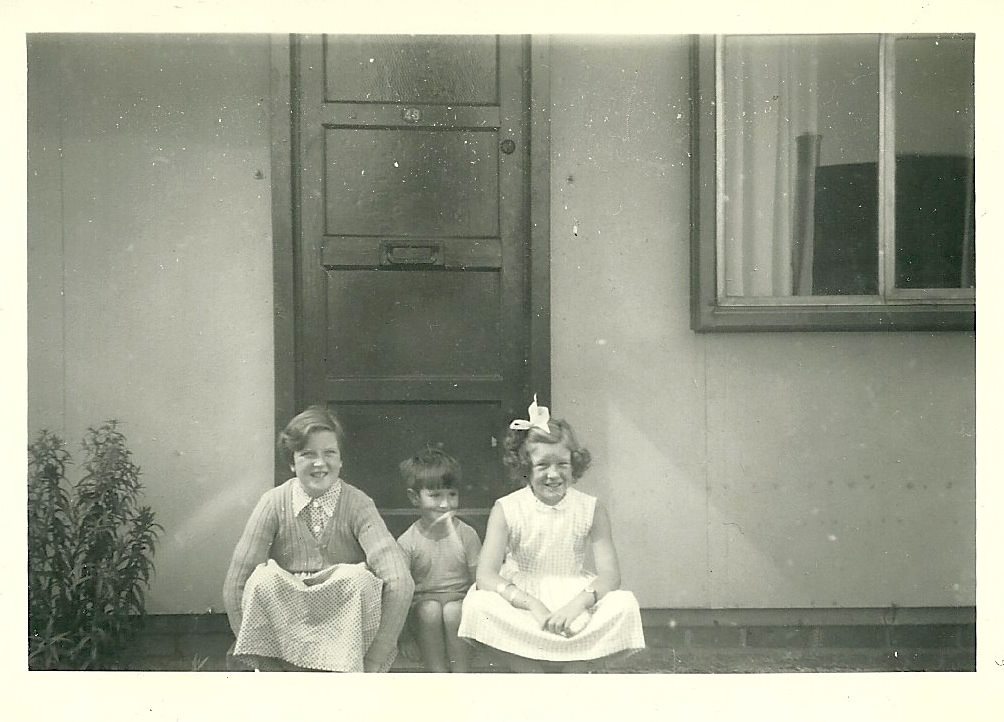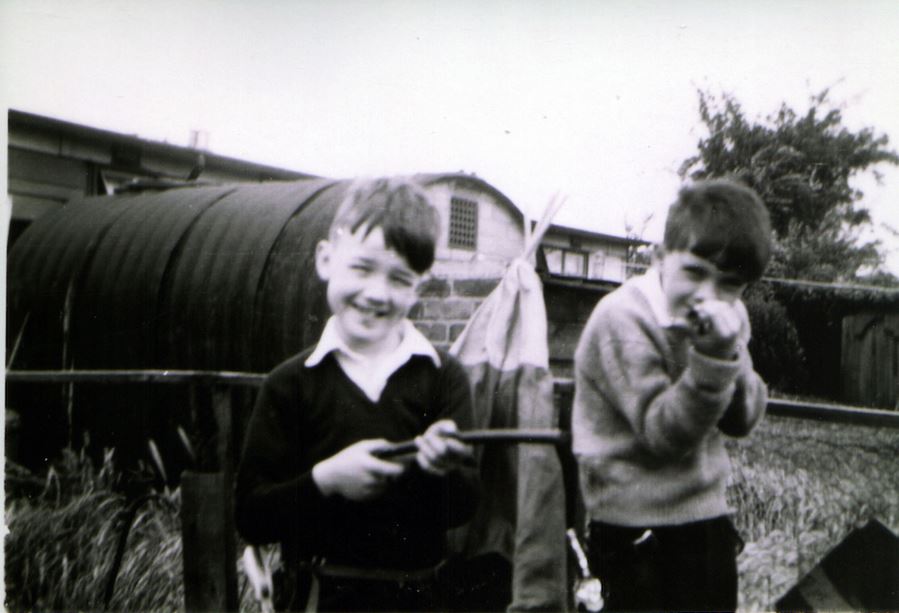My passion or rather obsession for prefabs happened by accident very soon after I arrived in London in 2001. As a photographer, I have always been interested in photographing communities and people in different sorts of habitats. I had started a long term project on Gypsies and was spending a lot of time on Travellers’ sites. A friend of mine told me there were some kind of mobile homes near where she lived in Peckham. “You should go and have a look”, she said. And that’s what I did. I immediately recognised the little bungalow was a post-war prefab – we also had loads in Normandy where I come from. I was surprised it was still up, lived in and looked after. I knocked on the door. An old man opened it. With the thickest French accent, I told him I was interested in his house. Could he give me a bit of a background? He spotted the accent and asked where I was coming from in France. I replied, he smiled. He was a D-Day veteran. I was invited in and bombarded with prefab information, tea and biscuits.
That’s how I discovered the Temporary Housing Programme and how the war government had decided as early as 1942 to use prefabs as a solution to house servicemen and people who had been bombed out after the war. More than 156,000 were erected all over the UK in 1946. Supposed to last 10 to 15 years, a few thousand are still up and very much loved by their residents seventy years later.
After my first prefab visit, I quickly understood I had discovered a national treasure, nobody seemed to really care about. The last prefabs were being demolished and nothing was done to record the residents’ memories and photograph the buildings. So as no-one was doing it, I went on a systematic mission of photographing all the ones I could find.
When residents were happy to let me in, I would photograph them inside their homes and record their memories. That’s how I became a prefab anorak. I really loved the buildings – their design, the fact they were detached and surrounded by large gardens, their modernism (they were all mod cons, with constant hot water, fitted and equipped kitchen, inside toilets), and the sense of community they helped create. My love for prefabs has never stopped since and from amateur enthusiast, I became an expert.
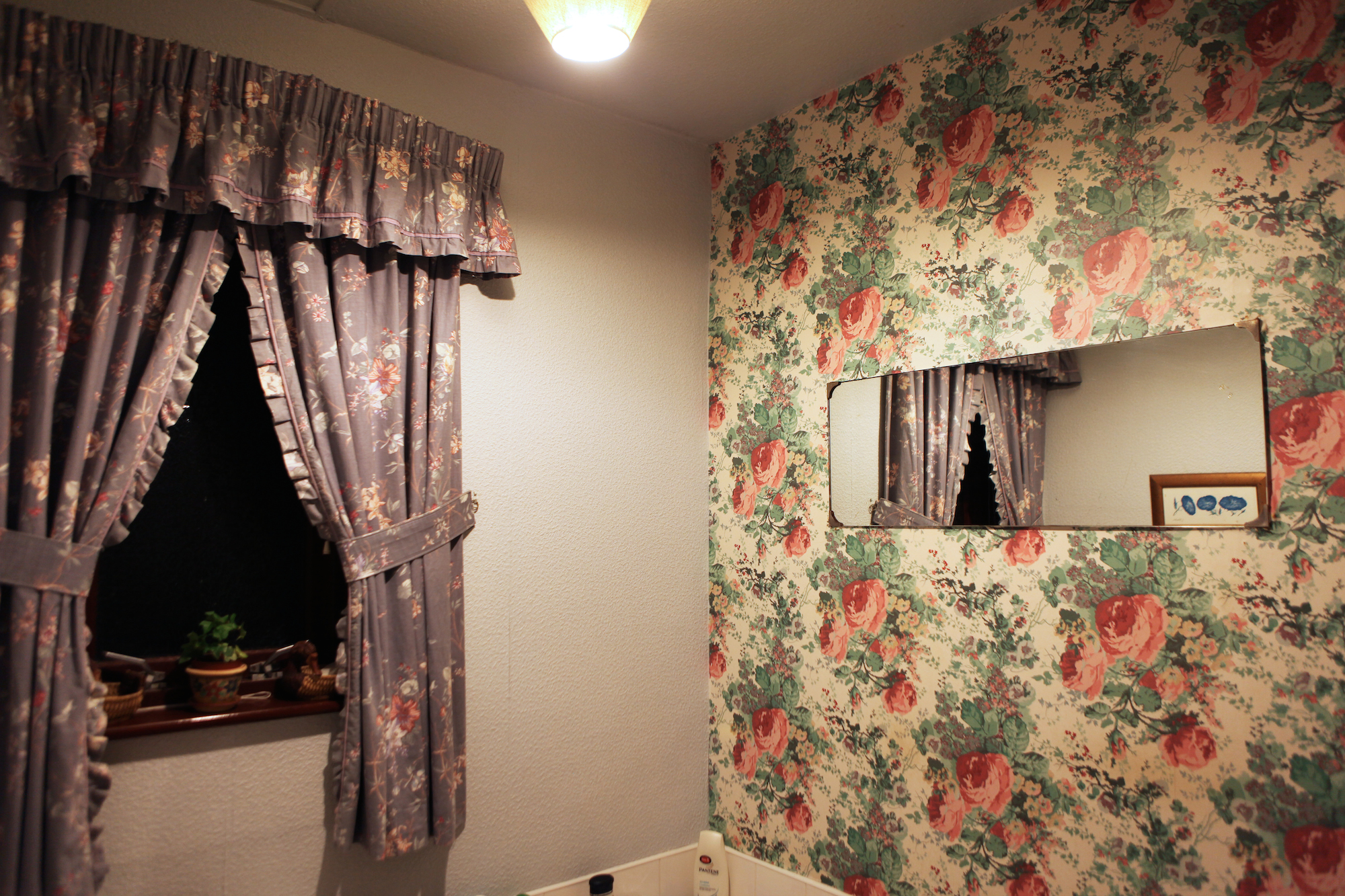
Post-war prefabricated houses in Plasterfield, Stornoway, Isle of Lewis, Scotland. About 50 of them were built in 1947 as a response to the post-war housing shortage on Lewis. They were called the “Isle of Lewis type”.
Thousands of post-war prefabs are still being lived in and cherished by their tenants or owners all over the UK. I love prefabs. Some people will think living in a prefab is like living in a box. Yes, it might sound or even look a bit like that but what a lovely, sophisticated box! I am talking about post-war prefabs, erected in a hurry just after the war when Britain was suffering an unprecedented housing shortage. More than 150 000 of these prefabricated houses were erected all over the UK mainly in small estates. They were luxury to most of the residents who mainly were service men coming back from the war and reuniting with their family. Their prefab became their castle with all mod cons and even more than any working class could hope for at the time: hot water, toilets inside, a fitted kitchen with a gas fridge and a garden all around the house. Part of the temporary housing programme, they were not supposed to last over a decade. Yet, over 70 years later, a few thousand are still standing and very much loved.
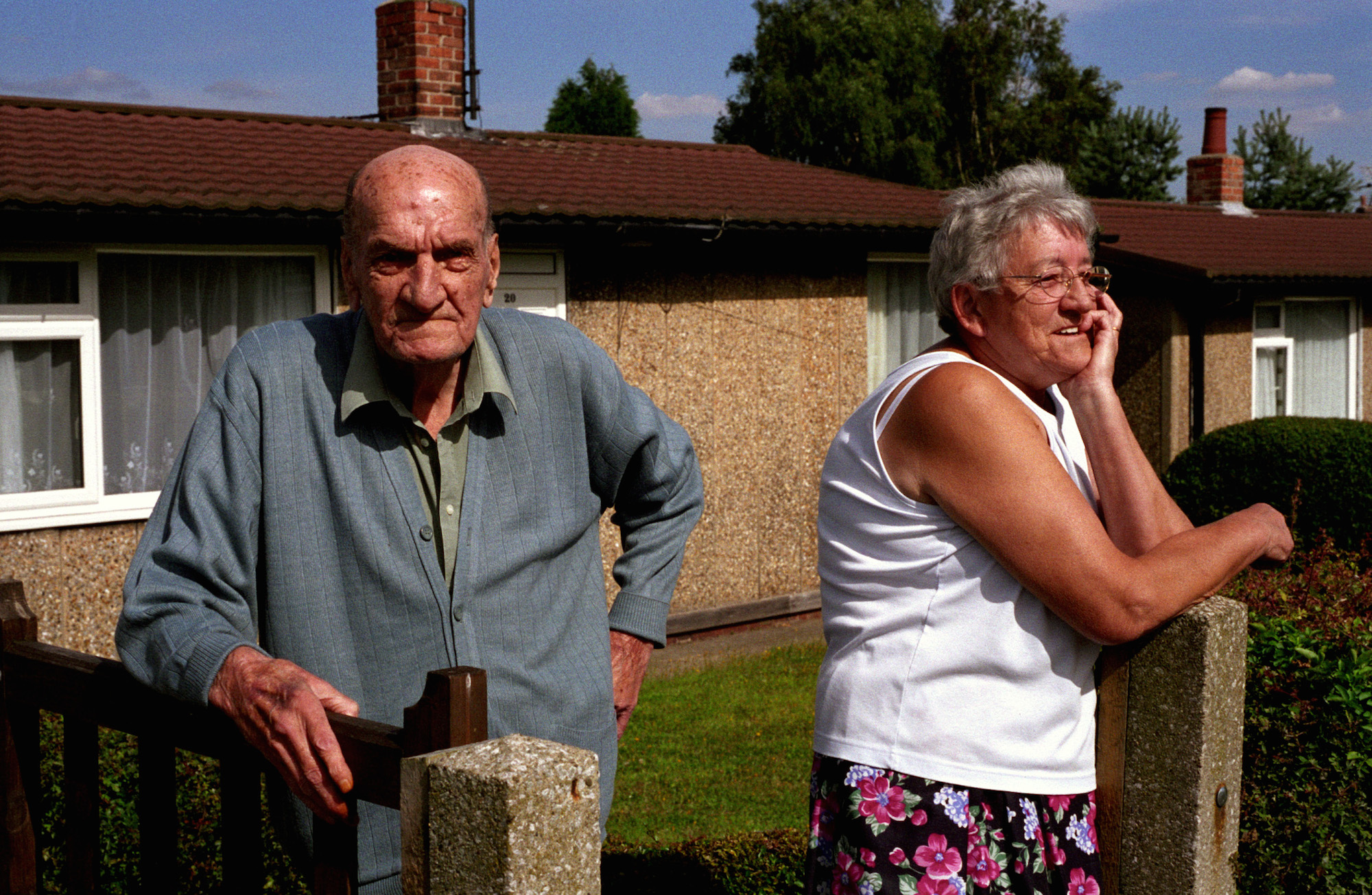
When I met both Jean and Ronald in Chesterfield, I was very touched by the love they still shared for each other after being married for almost 60 years. There was something very moving about them – although Ronald looks a bit grumpy in this photo. He was a miner as were many of the men from his generation who lived in prefabs. He had a bad cough when I met him in 2005 but he was still smoking occasionally. His 1960s ashtray always stood near his armchair. Seven years later, Jean is sitting in it, the ashtray has gone, so has Ronald. Jean has hung a black and white photo of “my Ron” – as she calls him – when he was a kid and a recent one in colour just above his old armchair. Jean sounds sad when she talks about him but she can also be very smiley and she shows us where she now usually sits, by the window, “So I can have the view on everything what’s going on on the street!”, she she admits, with a big cheeky smile.

A prefab on the Excalibur estate at Christmas time in 2011. Post-war prefabricated house at the Excalibur Estate, in Catford, South London. The 186 uni-seco prefabs were built in 1946 by German and Italian prisoners of war.
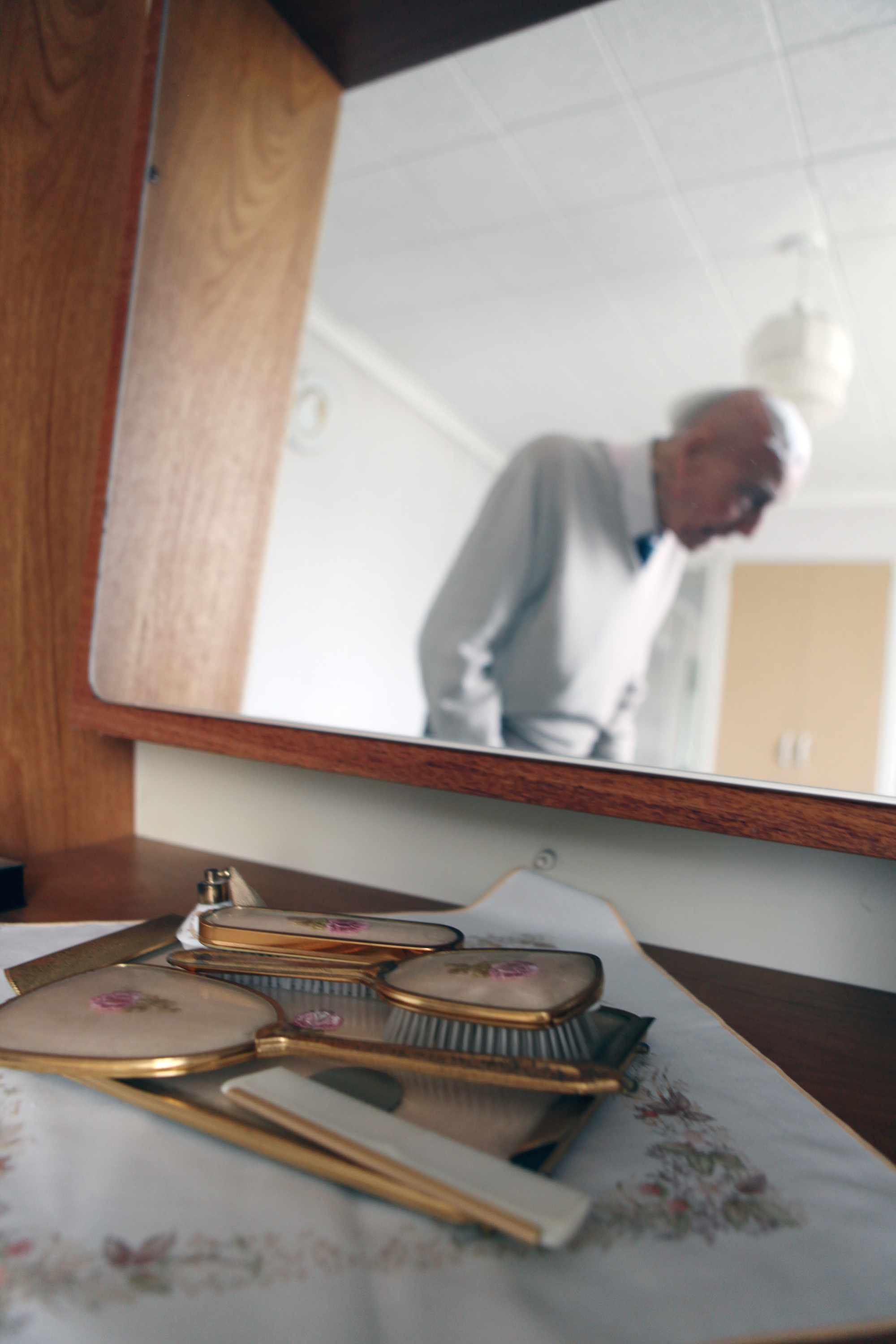
“The demolition is breaking my heart. Quite honestly, it will be finish of me if I have to move. I don’t like to think of them being pulled down. It breaks my heart. I close my eyes when I pass the ones that are boarded up. I’ve loved this place from day one'” – Eddie O’Mahony from the Excalibur Estate.
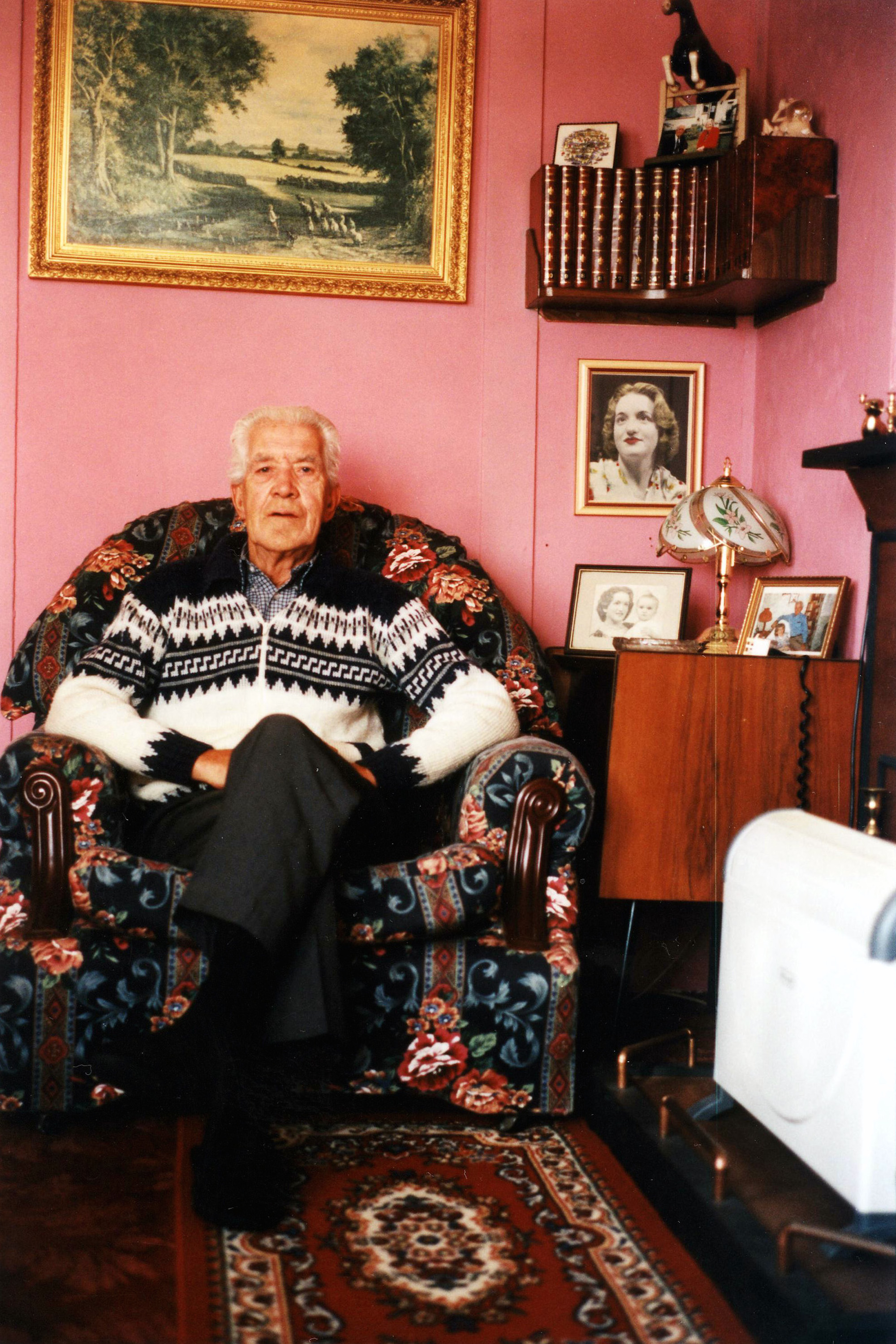
Ted (Edward James Lawson) was a lovely man. I used to spend a lot of time in his prefab. He had a pretty one with timber cladded exterior walls. Each room was painted with bright colours: the kitchen was blue, the living room pink, the bathroom orange… I particularly loved the black and white portrait of her wife painted over with watercolours. He was offered a prefab in the late 1980s as his disabled wife couldn’t manage stairs anymore. They both loved the place straight away. When she passed away, he decided to stay. Ted died in 2006, one year after I last saw him. Howard, the TMO (Excalibur Tenants Management Office) manager told me he was very distress at the end, mainly because of what was going to happen to the prefabs.
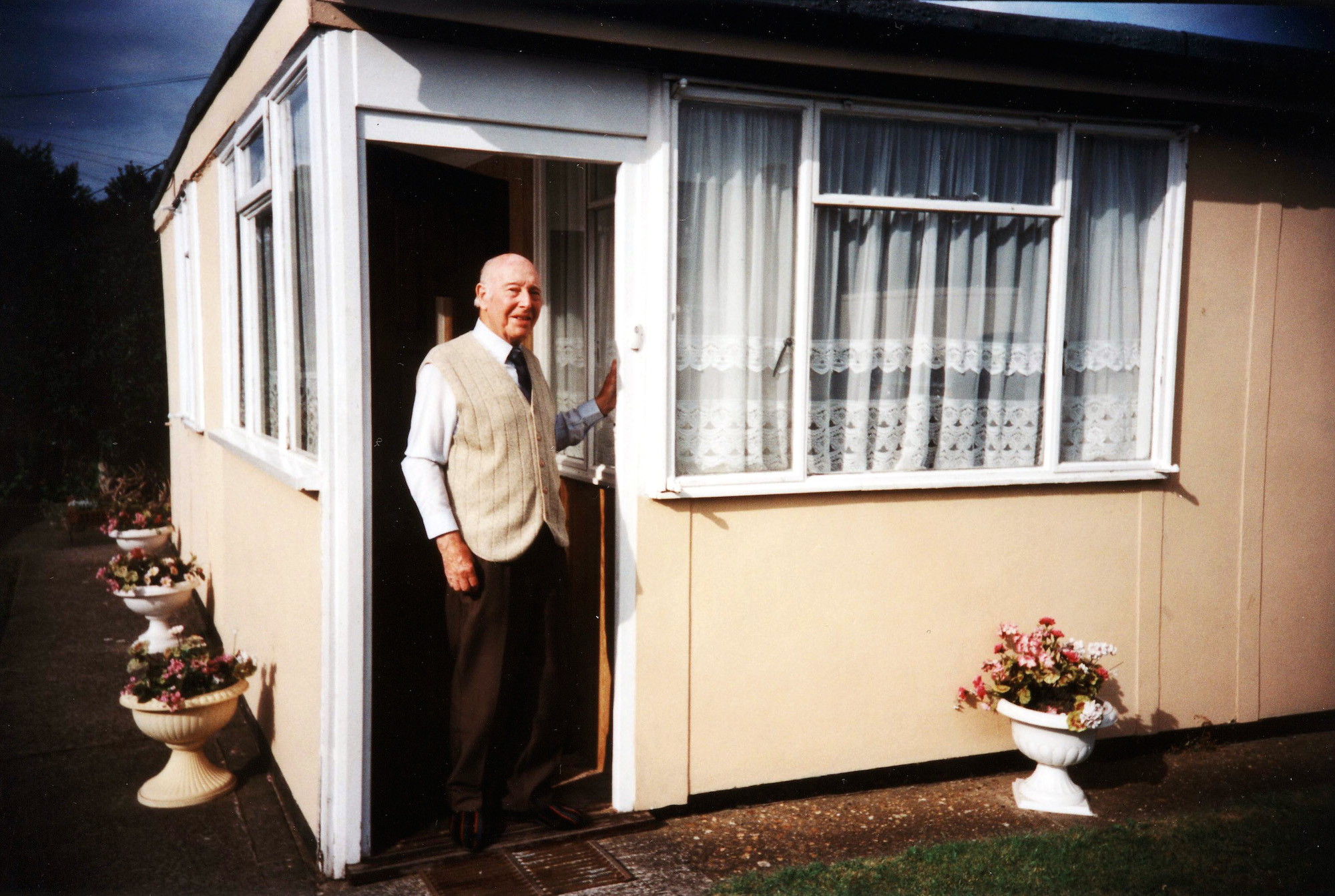
A few months after my first prefabs’ visit in Peckham, I discovered the Excalibur Estate in Catford, an estate of 186 post-war ‘uni-secos’ to be precise. Possibly the largest remaining one in the UK. There was a holiday feel to it: the uniformity of the bungalows, the little streets and alleys, the low rise skyline and the cute gardens surrounding each prefab. Surprise was my first reaction. How could there still be there, all of them, in a sort of unity? Then I felt moved, touched by the strong sense of community they had probably help create. I knew I was going to become an Excalibur Estate regular, which I am still, more than a decade later… Above is Eddie O’Mahony. I first met him in 2002. Born in 1920, Eddie is the oldest resident in the estate. After being demobbed and returning from Singapore in 1946, he found a bombed-out home and nowhere for his young wife Ellen and their little son to live. At first he wasn’t sure he wanted to live in a prefab but Ellen, who was used to outdoor toilets and no plumbing, immediately loved the prefab’s mod cons: a refrigerator, gas stove and lovely garden. Eddie has cared lovingly for his home and even bought it in the early 1990s. He has kept many of its original features and proudly says: ‘I love my prefab. I wouldn’t swap it for Buckingham Palace, even if it included the Queen’
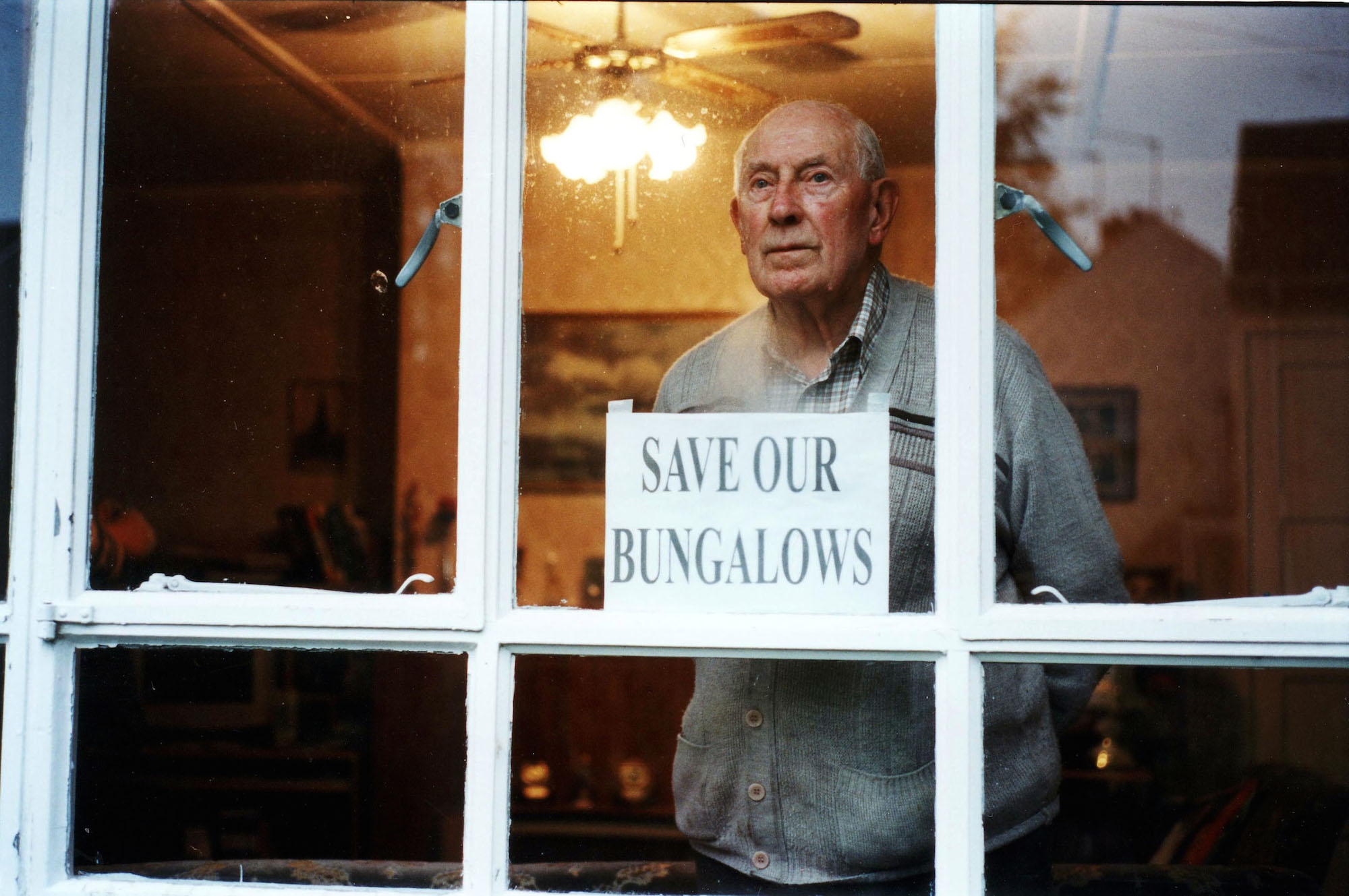
In 2002, the local authorities in Redditch in the Midlands wanted to pull down the 32 Dolphin Road prefabs and redevelop the area. Alan Mason, one of the residents, had seen some of my work published on the internet and wondered if I could use my contacts to alert whoever could help them with their fight against the council. I said I would do what was in my limited power and travelled to Redditch on a stormy day of October 2002. Although it was only about 40 minutes by train from Birmingham, I had the feeling I was reaching an end of the world. Maybe because the tracks were stopping there, it was the end of the line. This photo shows Jack in his prefab in 2002, during the campaign to save the bungalows. Jack was the oldest resident on the estate.

Jim Blackender in front of his prefab in 2009. Jim fought and lost. He raised an army of residents to save the prefabs from demolition but the battle ended up in a ballot which led by 54% to 46% to the ‘regeneration’ of the estate. By regeneration, the council means demolition of the post-war bungalows and replacement with double and triple storeys dwellings. The idea is to triple the density of the population but it’s difficult to find out more as Lewisham is remaining very discreet about the future. The demolition process should have started in October 2012 but in June 2013, it still hadn’t begun. On the estate, more and more prefabs are being boarded up. Residents were hoping they would be rehoused in new houses at the same location but it doesn’t look like it will happen, so they are ending up accepting other housing options offered by the council as Jim and his wife Lauren did. In September 2012, they left their prefab for good for a 2 bedroom attached house in Rochester, Kent. I paid them a visit in Winter 2013. They both became very emotional when talking about their prefab. The scar hasn’t healed yet.
“In a prefab, you’ve got a two-bedroom detached property and unless you have lots of money, you’re never ever going to get that again,” says Jim. “It was something we were fortunate to have as council tenants. Once the prefabs are gone, they’re gone forever; you’re never going to get back to a place like that. I liked everything about the prefab. I couldn’t put a finger on it. It was the people, the location. When we moved in 20-odd years ago, there was a really strong community, and there was no way anyone could have taken that place from the residents. But it’s been left to rot, the Council should have been carrying out repairs, painting and redecorating, so people would want to live there, but hardly anything has been done to the estate. It’s depressing to watch it fall into disrepair.”
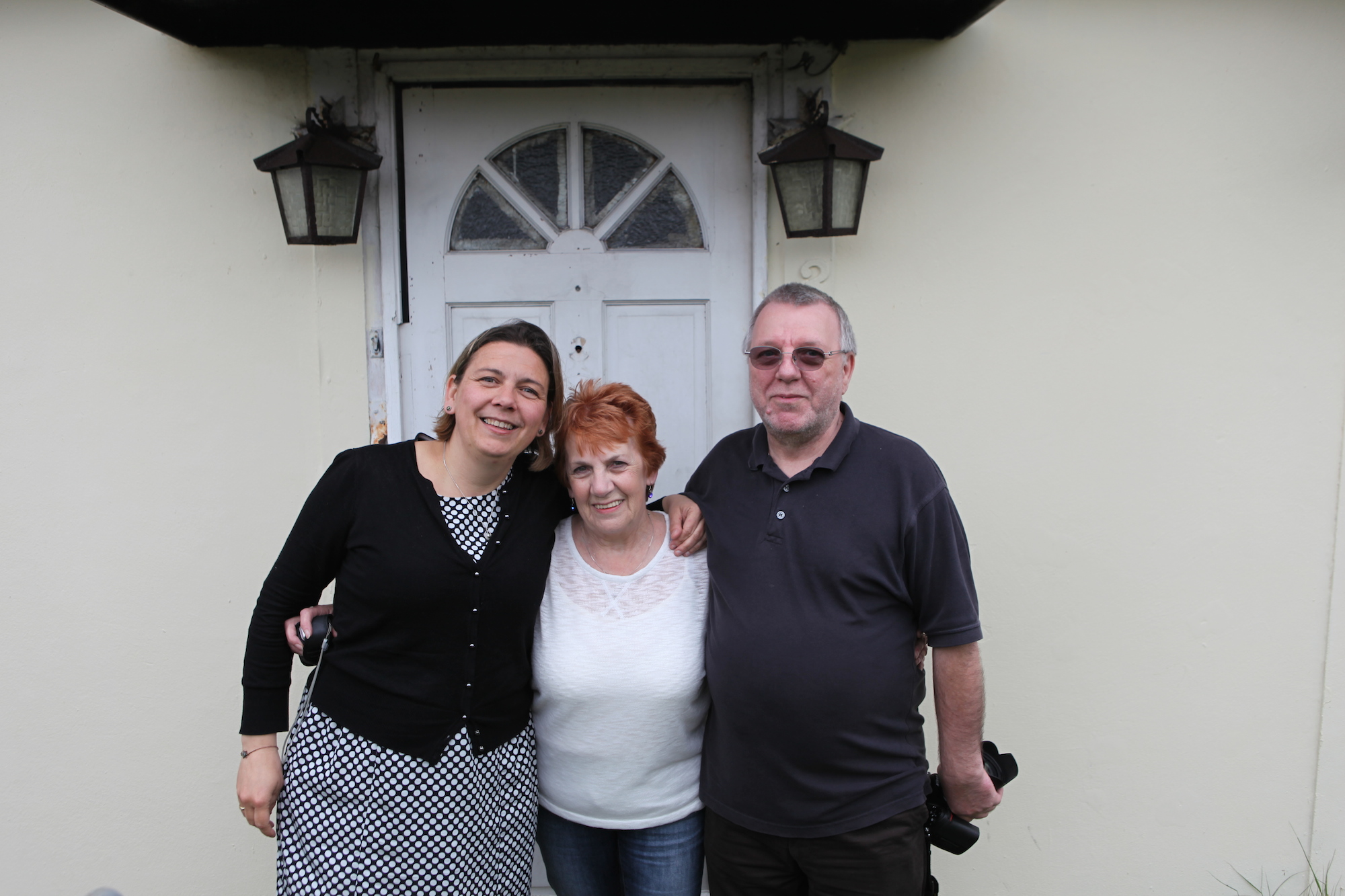
Elisabeth Blanchet, Rosemary Roffey and Alan Brine outside the prefab they grew up in on the Excalibur Estate, May 2014

Christine Gregory in front of her prefab in 2012: I have never been inside such a packed prefab. There is stuff about everywhere: walls covered with posters, photos, videos, DVDs, armchairs, sofas, shelves and funny furniture for cats! Christine has got 13 of them! Not surprising she is nicknamed ‘the cat lady of Catford’! Whatever happens, Christine is determined to stay in her prefab: “They are all right. You just have to do them up a bit from time to time. They are lovely.”
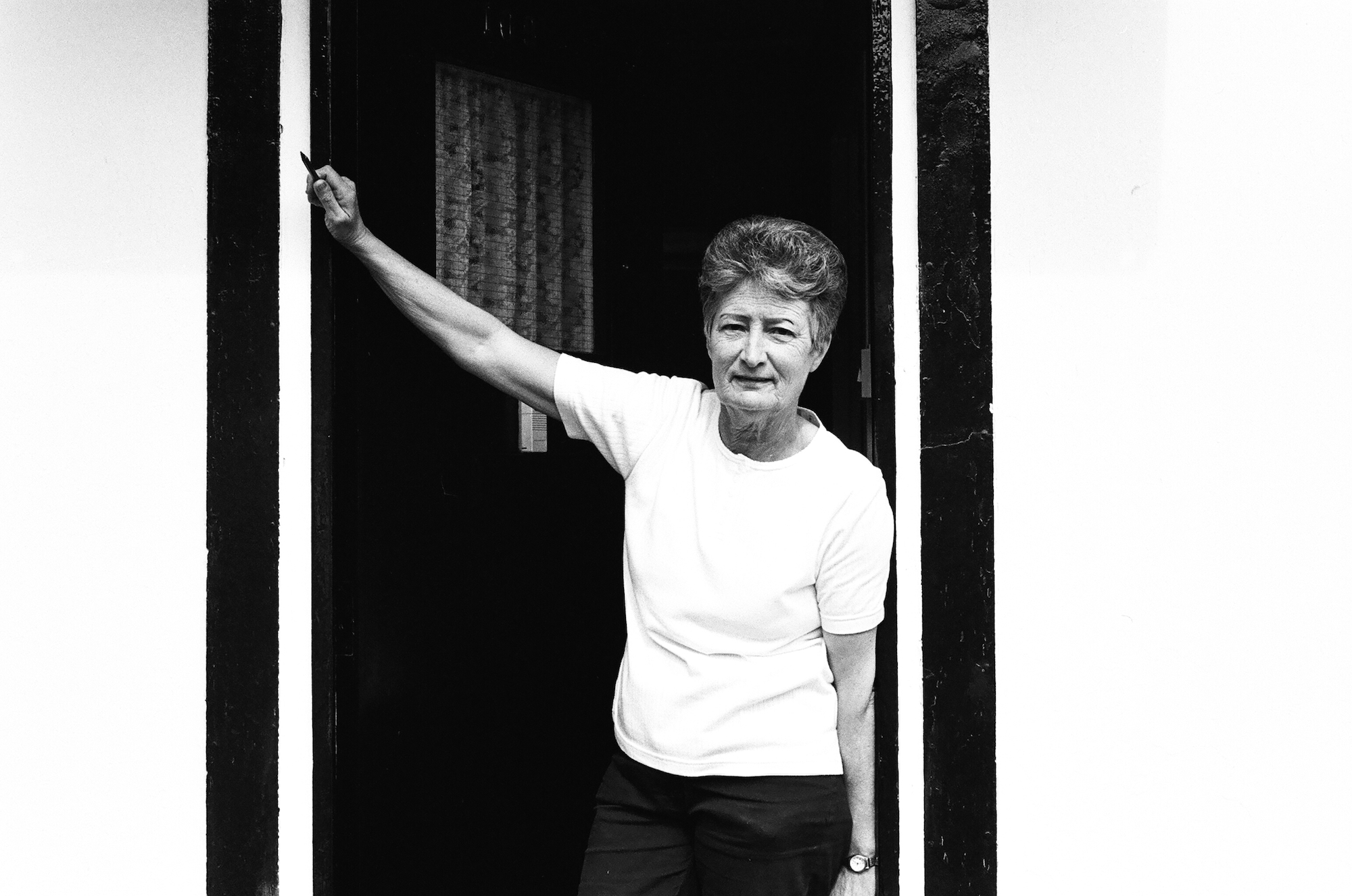
Alice outside her uni-seco Prefab in Nunhead, 2002. Post-war prefabs in Peckham, Nunhead, Dulwich, South London in 2002 and 2003
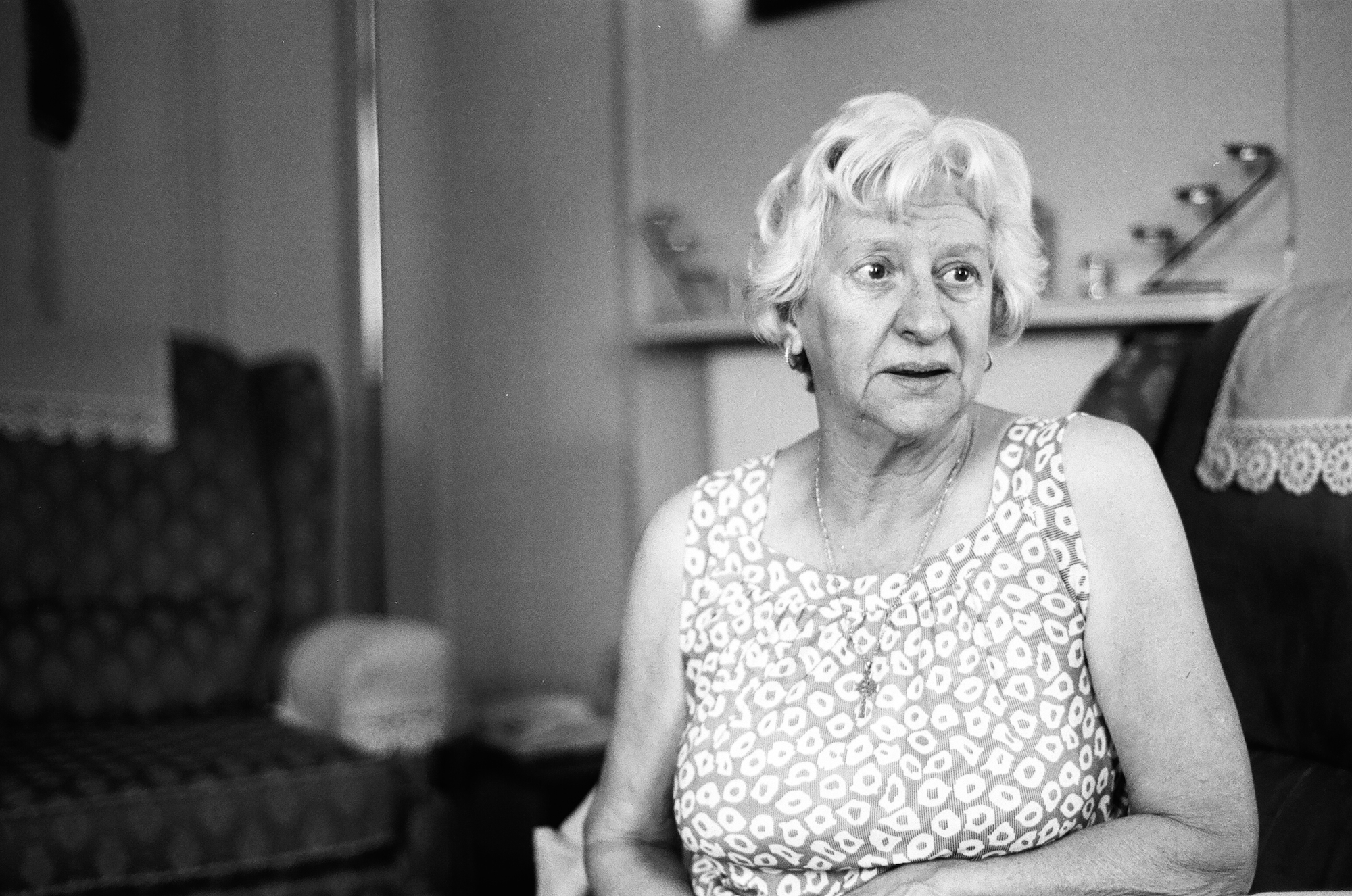
Mary Lowe inside her uni-seco prefab in Nunhead, 2002. Post-war prefabs in Peckham, Nunhead, Dulwich, South London in 2002 and 2003
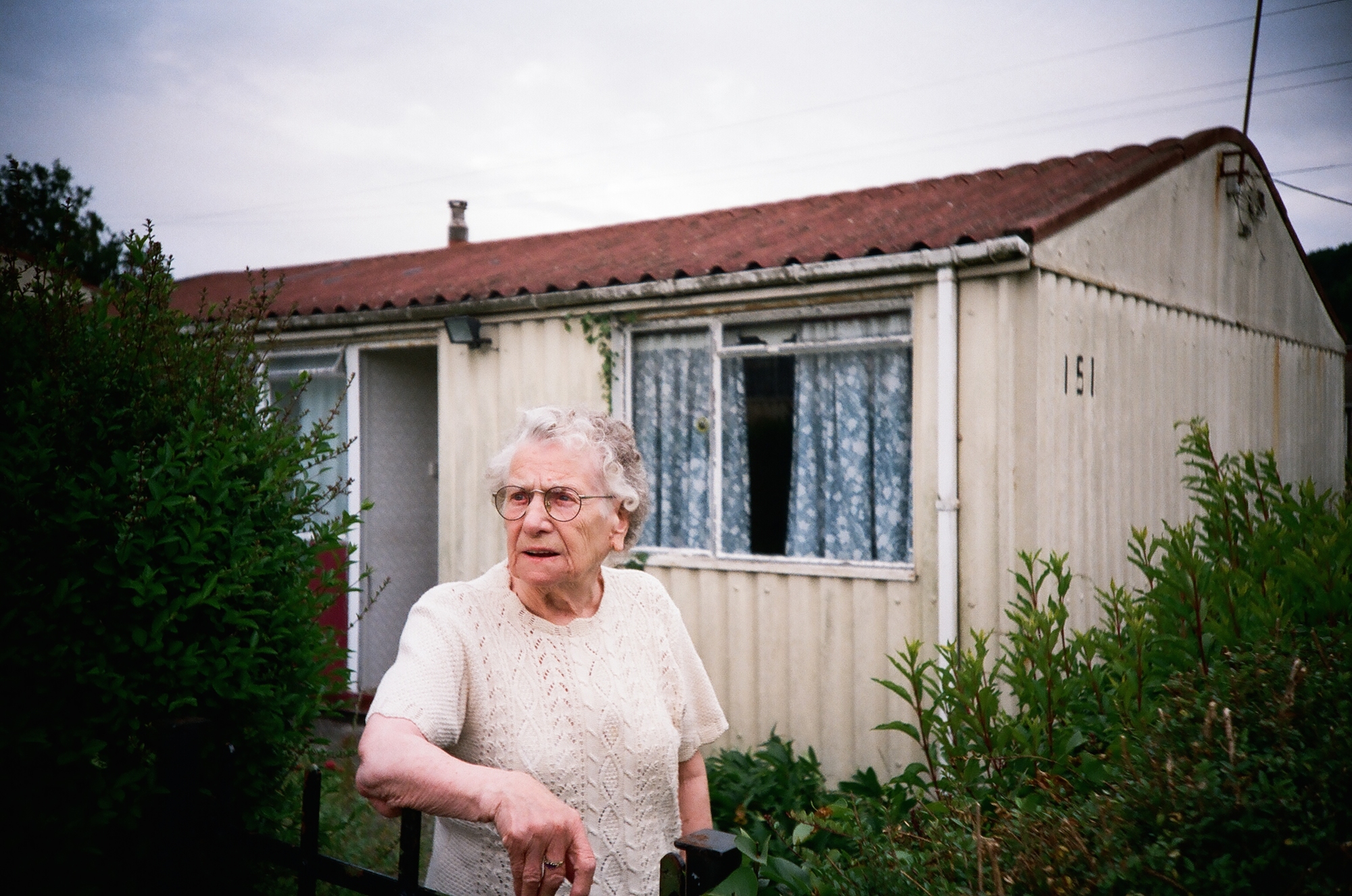
In 2002, Minnie was outside in her garden when we were walking around the estate. So we stopped for a little chat and a cup of tea with her. She had been here since 1949. She told us her husband and her only paid £3 a week rent back in the 50s. “I can’t say anything bad about my prefab. We have been very happy here,” Minnie recalls. “We could get solid food out of the garden, there was a local shop and the milk- man still does his delivery. It has been 53 years! There was a park for the children and I used to go dancing twice a week while my husband was going to the pub. Men went to the pub!”
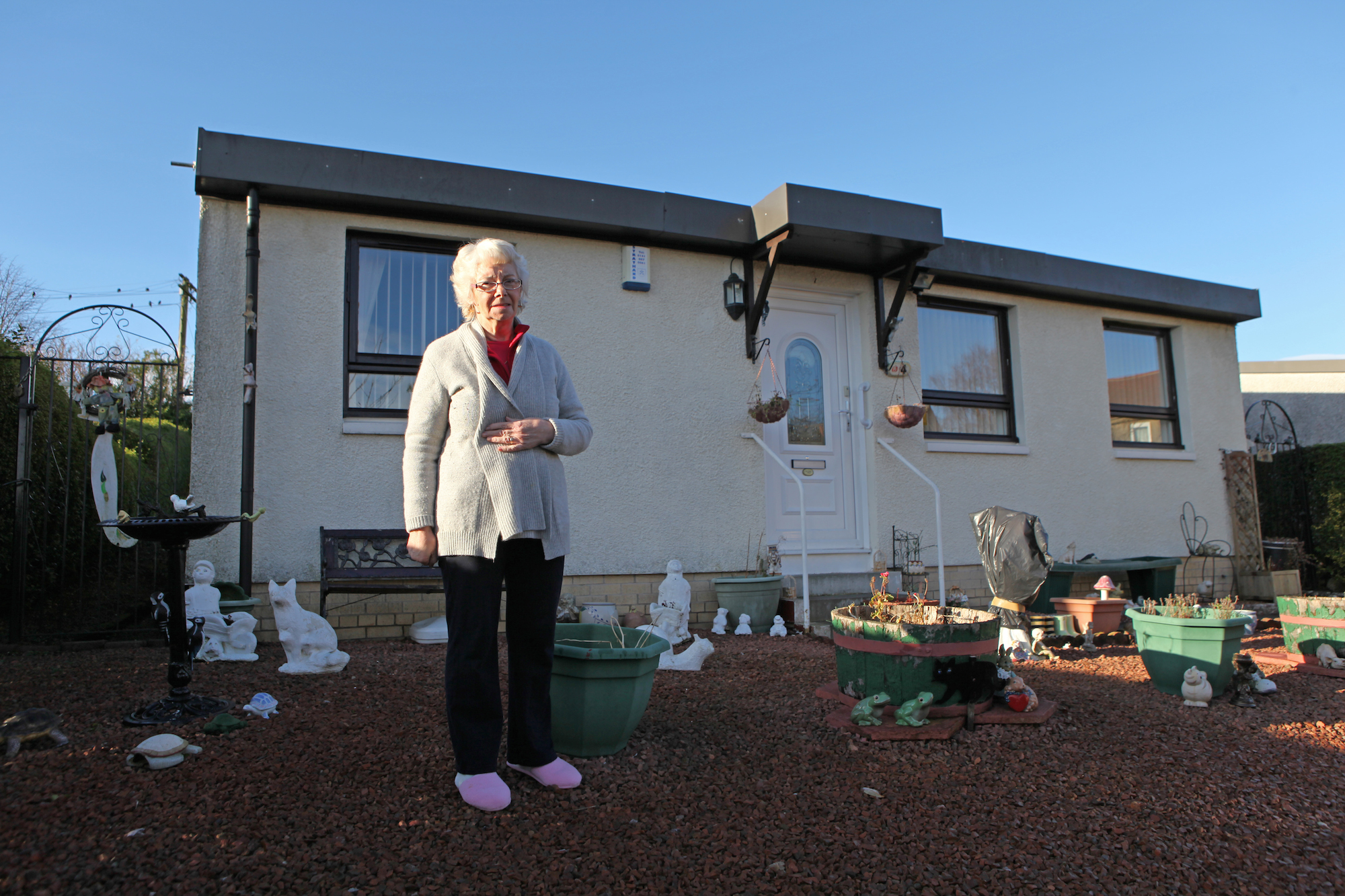
A lady outside her AIROH prefab, 2012. Post-war prefabricated houses in Paisley, near Glasgow, Scotland
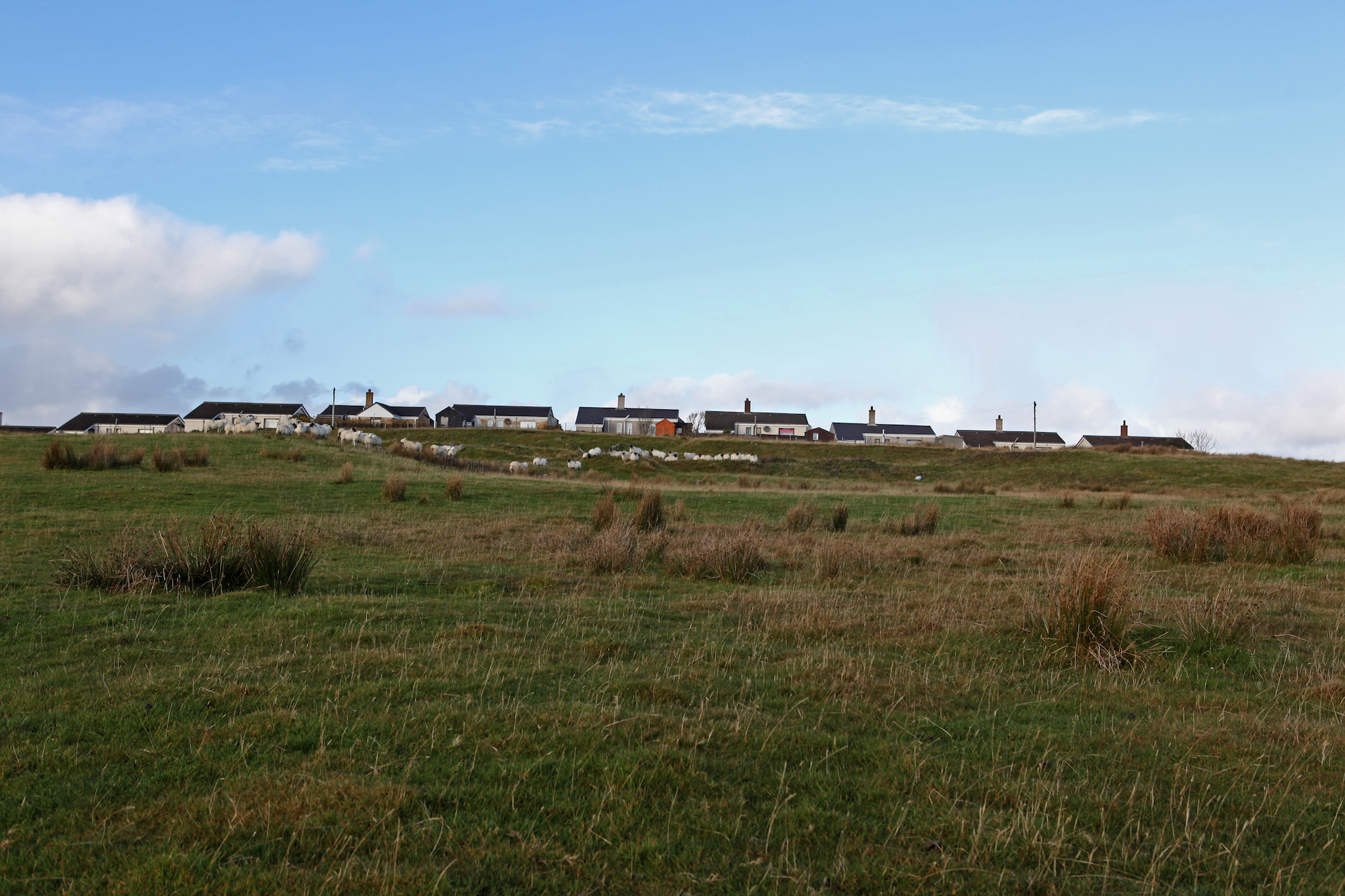
There are post-war prefabs as far as Stornoway on the Isle of Lewis. Not that The Hebrides were bombed by the Germans but there was a serious housing shortage there in 1946. Homeless people had even started squatting the castle. I found out about the Isle of Lewis prefabs reading about the different types of post-war prefabs. I instantly thought I have to go and see them. A few years ago, I went on Lewis and Harris for the first time and fell in love with the place. I was stunned by its beauty, its dramatic landscapes and seascapes, the sea, the ocean, the space, the wind which I am sure can make you crazy… So, when I discovered the was an ‘Isle of Lewis’ prefab type, I had such a good excuse to jump on a flight to Glasgow then Stornoway.
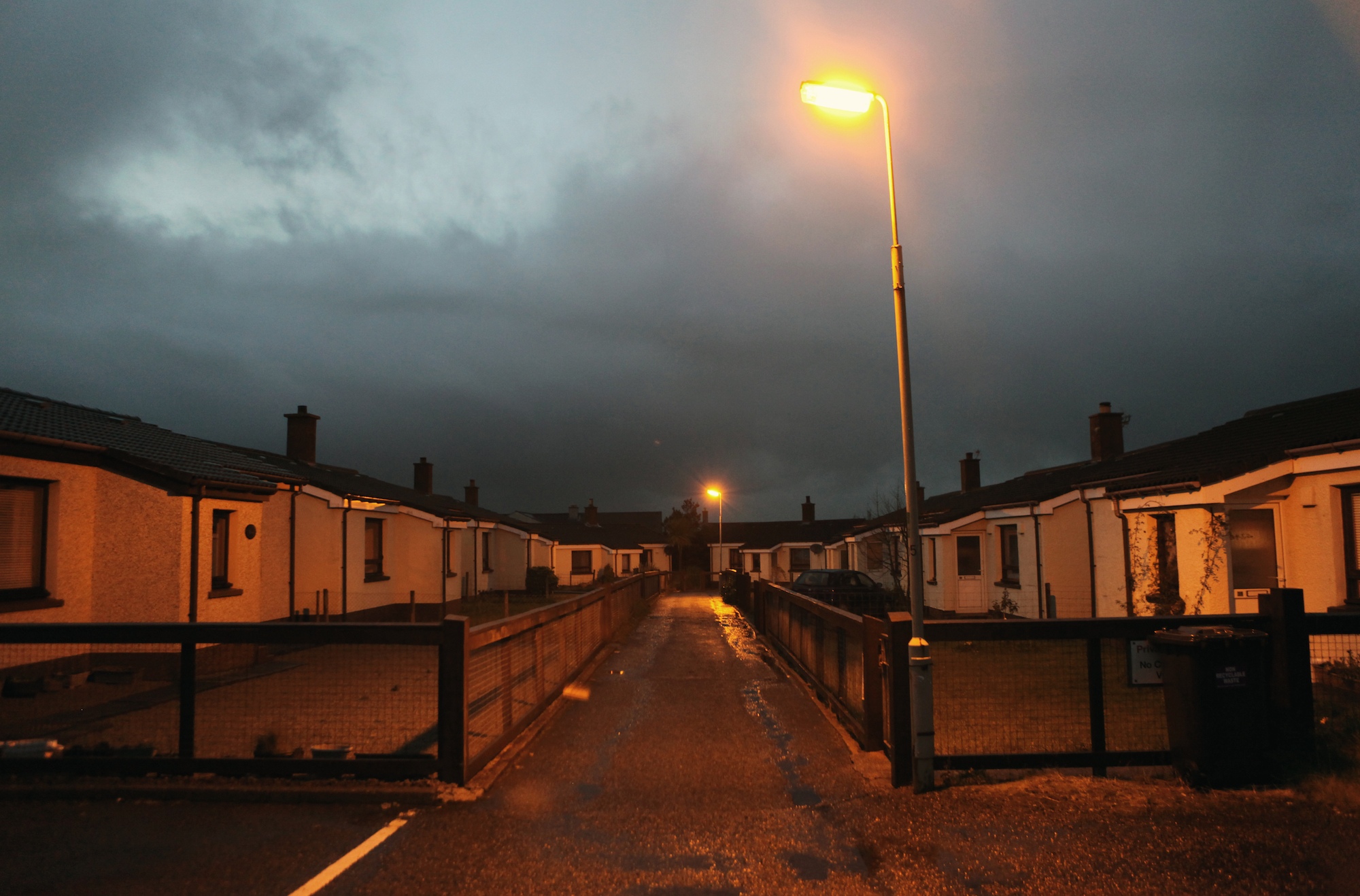
Post-war prefabricated houses in Plasterfield, Stornoway, Isle of Lewis, Scotland. About 50 of them were built in 1947 as a response to the post-war housing shortage on Lewis. They were called the “Isle of Lewis type”.
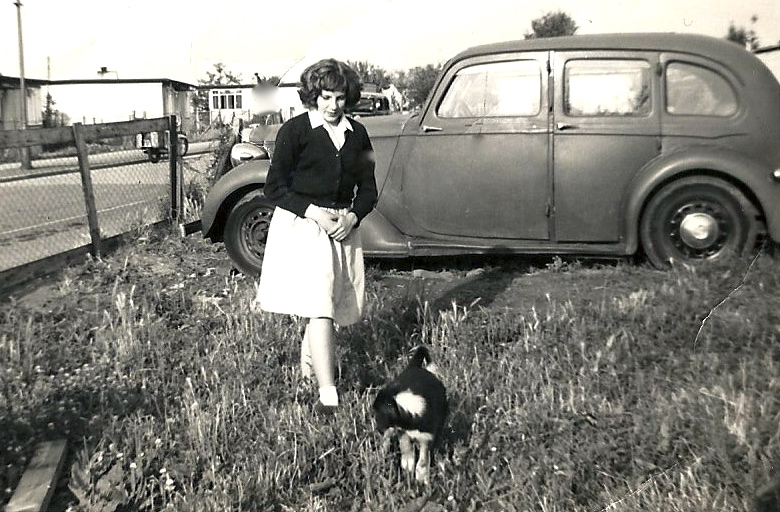
Woman in a prefab (uni-seco) garden with hen. A car is parked in the prefab garden. There is a row of uni-seco prefabs in the background.
After much coverage in the press and magazines, publication of my book Prefab Homes, and a solo show at Photofusion in 2013, I started to organise prefab tours in South London and created a museum dedicated to prefabs, The Prefab Museum, which aims to celebrate prefab life and build a unique national archive dedicated to prefabs.
For the last 15 years, I have been travelling all over the UK to document prefab life: I took pictures of prefabs’ residents in Wales, North Derbyshire, Suffolk, Scotland, Birmingham in the West Midlands and even in the Outer Hebrides! Each travel is a new prefab adventure full of rich encounters. The stories prefab residents tirelessly repeat the same love and attachment for their “little castle”.
Would you like to support Flashbak?
Please consider making a donation to our site. We don't want to rely on ads to bring you the best of visual culture. You can also support us by signing up to our Mailing List. And you can also follow us on Facebook, Instagram and Twitter. For great art and culture delivered to your door, visit our shop.

